TECHNOLOGY
Technology is revolutioni s ing the financial services industry by enhancing efficiency, security and customer experience, and driving innovative solutions and growth.
Page 9 – 14
DREAD DISEASE
Cover for Dread Disease is crucial as it ensures peace of mind and access to necessary medical treatments in times of need. But do your clients fully understand its importance?
Page 18 – 19
OFFSHORE INVESTING
Offshore investing remains essential for diversifying portfolios and reducing risk. We take a look at what’s happening in this sphere in light of the current trading environment.
Page 22 – 25

The New Paradigm: How AI is redefining financial advising
BY KOBUS BARNARD CEO at Allegiance Consulting
AI has shattered boundaries once thought exclusive to human intellect: passing the Bar and Medical L icencing exams, mastering multiple languages, and revolutionising scientific research with breakthroughs in protein folding and drug development. From defeating world champions in chess to creating stunning art and composing original music, AI’s prowess extends to strategic thinking, creative expression and beyond.
Its transformative impact on financial analysis, market prediction and customer service underscores AI’s role as an unparalleled force of innovation and progress.
It passed the Bar exam, the exam required to practise law in the United States. To pass the exam, the AI had to be able to do complex legal reasoning, consider ethical dilemmas and case law analysis, showcasing its ability to understand and apply intricate legal principles. This was done by a machine that passed in the 90th percentile of all lawyers.
AI systems have participated in live debates with humans, constructing coherent, persuasive arguments and responding to counterarguments in real time. This demonstrates advanced understanding, reasoning, and rhetorical skills.
AI models have excelled in video games such as StarCraft II and Dota 2, where strategic thinking, real-time decision-making and teamwork are crucial. These achievements highlight AI’s ability to handle dynamic environments and long-term planning.
Alice in a financial wonderland
Financial services are not immune to AI. In 2001, an article titled ‘Surviving the Future’ appeared on the cover page of MoneyMarketing, where the writer envisioned a world where artificial intelligence (AI) would revolutionise financial services. At the time, the idea of AI-driven financial advisers seemed like science fiction. Fast forward to today, and that vision is becoming a reality, fundamentally reshaping the financial advisory landscape. This article explores how AI is changing the foundation of financial advising, emphasising that it is not a threat but a business imperative. It also outlines the evolving role of financial advisers and the end of the era of product pushers.
The evolution of financial services
In 2001, AI was in its infancy, and the notion of AIdriven financial services was speculative. Today, AI has permeated every aspect of our lives, including financial services. The ability to perform complex financial calculations, predict market trends and provide personalised advice has become a reality, thanks to advancements in machine learning, natural language processing and data analytics. The shift from an agricultural to a knowledge-based economy has been profound, and we are now witnessing the dawn of a new era in financial services.



www.moneymarketing.co.za @MMMagza @MoneyMarketingSA First for the professional personal financial adviser INSIDE YOUR JUNE ISSUE 30 June 2024
Capital (Pty) Ltd is an authorised financial services provider (FSP 34142).
Laurium
IMAGE S upplied
Continued on next page

Gambling
In times like these, investors are leaning towards safer choices.
Fixed options have surged exponentially, with our very own Fedgroup Secured Investment experiencing a remarkable uptick in the last few years.
Inspired by insights from our broker network, we’ve added two more fixed-rate offerings to our suite of products. The Fedgroup Fixed Endowment is a fixed-rate option tailored to South African investors, bringing stability and diversity to their portfolios, with an added tax benefit to boot!
Our brand-new Flex Income Plan is the ultimate solution for those seeking enhanced income, unparalleled flexibility, and access to a portion of the capital when life happens.
is for the
casino
Why expose your clients to unnecessary risk? Explore Fedgroup’s fixed-rate options today. Email VIP@fedgroup.co.za or call 0860
Fedgroup Financial Holdings (Pty) Ltd is a licensed controlling company and companies within the Group are authorised FSPs.
333 477
Continued from page 1

Shifting business models
Traditionally, financial advisers had to choose between two business models: focusing on fewer clients with deep, personalised service or serving a large volume of clients with more transactional, single-need advice. Disrupting these norms, AI now allows advisers to offer personalised service at scale, enabling them to expand their client base without sacrificing quality. This transformation challenges the conventional wisdom of choosing between depth and breadth, allowing advisers to achieve both.
The role of AI in financial advising
AI can perform millions of financial calculations in seconds, predict future scenarios with high accuracy, and provide tailored advice based on comprehensive data analysis. This empowers advisers to offer more personalised and effective service, enhancing their role rather than replacing it. Trust and relationships remain paramount, and AI supports advisers in building and maintaining these essential connections.
AI’s ability to analyse vast amounts of data and derive actionable insights will transform how financial advisers operate. Traditional methods of financial planning and advising, which rely heavily on manual analysis and human intuition, will give way to data-driven, algorithmic approaches. This shift will enhance the accuracy, efficiency and personalisation of financial advice.
Enhancing adviser roles
Contrary to fears that AI will replace financial advisers, I believe the role of human advisers will become more critical than ever. AI will handle routine tasks, complex calculations and data analysis, freeing advisers to focus on what they do best: building relationships, understanding clients’ unique needs, and providing empathetic, personalised guidance.
The future adviser will be a hybrid professional, combining technical proficiency with emotional intelligence. Advisers will need to understand AI tools, interpret their outputs, and translate these insights into actionable advice that resonates with clients. This requires continuous learning and adaptation, embracing technology as an ally rather than a competitor.
Transforming client relationships
AI will enhance the depth and quality of client relationships. By leveraging AI, advisers can gain a comprehensive understanding of their clients’ financial situations, goals and behaviours. AI can identify patterns and preferences, allowing advisers to offer highly personalised advice and anticipate clients’ needs before they even express them.
This level of personalisation will build trust and loyalty, key ingredients for long-term client relationships. Clients will appreciate the proactive approach, where their adviser seem to know them better than they know themselves. This transformation will redefine the value proposition of financial advisers, positioning them as indispensable partners in their clients’ financial journeys.
Promising research and prototyping
At Allegiance, our research and prototype is yielding promising results. We have successfully fused a financial identity with a multi-modal AI referred to as Ariel, and gave the AI access to our advanced modelling engines. These innovations will enable financial advisers to push boundaries and achieve what was previously impossible, expanding their client base and providing unparalleled service. In simple terms, for the first time it will become possible to scale quality advice, i.e. truly helping advisers to service more clients with less time without compromising quality. The integration of AI into financial
advising represents the pinnacle of this transformation, offering advisers the tools they need to succeed in an ever-changing landscape. By embracing AI, advisers can enhance their practice, build stronger client relationships, and provide unparalleled service.
The integration of AI into financial advising represents the pinnacle of this transformation, offering advisers the tools they need to succeed in an ever-changing landscape. By embracing AI, advisers can enhance their practice, build stronger client relationships and provide excellent service.
The future of financial advising AI is not a threat to financial advisers; it is an enabler. By leveraging AI, advisers can offer more personalised and effective advice, focusing on building longterm relationships with clients. The role of financial advisers is evolving from product pushers to trusted consultants who understand their clients’ unique needs and aspirations.
The rapid pace of technological advancement means that advisers must commit to lifelong learning. Staying ahead in this dynamic landscape requires a proactive approach to education and professional development. Advisers must familiarise themselves with the latest AI tools, understand emerging trends, and continually refine their skills.
The sun is setting on product-focused distribution models
Advisers who focus solely on pushing products without understanding their clients’ foundational needs will soon find themselves disrupted. This disruption is happening slowly-slowly, and then at hyper-speed. The industry is shifting towards a more client-centric approach, where personalised advice and strong relationships are paramount. Advisers who embrace AI will thrive, and they will be able to scale at a pace never seen before.
Expanding client base and access to advice AI will democratise financial advice, making it accessible to a broader audience. Traditional advising models often exclude those with limited assets, as advisers focus on high-net-worth clients. AI-powered platforms can offer affordable, scalable advice to individuals across the wealth spectrum, addressing the underserved segments of the market.
This expansion will open new opportunities for advisers to reach and serve more clients. By utilising AI to handle routine tasks, advisers can offer tiered service models, providing basic automated advice for simpler needs while dedicating their expertise to more complex cases. This approach will maximise their impact and profitability, ensuring no client is left behind.
Ethical considerations and the human touch
While AI offers immense potential, it also raises ethical considerations. Advisers must ensure that AI is used responsibly, maintaining the highest standards of privacy, security and transparency. Clients must be informed about how their data is used and protected, fostering trust in AI-driven solutions.
The human touch remains irreplaceable
Empathy, intuition and ethical judgment are qualities that AI can’t replicate. Advisers must leverage AI to enhance these human attributes, ensuring that technology augments rather than diminishes their role. By blending technological prowess with human empathy, advisers can offer a service that is both cutting-edge and deeply personal.
ED’S LETTER

When I was growing up, one of my dreams was to see the person I was speaking to on the phone. I never believed it would be possible –cellphones were not even on the radar. How times have changed, and although my dreams came true, today I barely use Facetime. I asked my 21-year-old daughter what technological innovation she could imagine in the future that would improve her life. She couldn’t think of a single thing. Have we reached a place where the technological future is unimaginable? We haven’t, of course, and if our imaginations can’t go there, the microchips will. As we speak, Elon Musk’s AI firm xAI has raised $6bn to compete with rivals such as OpenAI. Musk is promising to build a supercomputer he calls a “gigafactory of computer”.
Meanwhile, Microsoft has also struck a multibillion partnership with OpenAI, which, incidentally, Musk is suing because he believes it has “abandoned its mission to benefit humanity”.
The scary thing about technology is how quickly it changes and how we must adapt to keep up. In this issue, we look at some of the ways technology is influencing the financial services industry. Francois du Toit from PROpulsion says that financial advisers should be approaching technology in a very structured and measured way, to ensure it’s a “benefit and not a burden”. It’s all about ensuring you are up to date with what’s available to ensure your business runs as smoothly as possible, and that your clients’ lives can be managed with ease.
We’re also looking at Fixed Income in this issue, once considered to be the safest bet in terms of investing. Is this still the case? We take a deep dive into this asset class to give you some insight from industry experts.
I’m writing this editorial on the eve of the elections, and I have no doubt that by the time you are reading this, we’ll be looking at a considerably changed political landscape in the country. I can only hope that everything will be free and fair.
Stay financially savvy,
SANDY WELCH Editor, MoneyMarketing







30 June 2024 www.moneymarketing.co.za 3 IMAGES Shutterstock .com and supplied
NEWS & OPINION Scan the QR code to subscribe to the MoneyMarketing newsletter
SUREN MAHARAJ CEO OF SM CONSULTING
In his 29-year career, Suren Maharaj has accumulated extensive experience and expertise, distinguishing himself as an astute chief financial officer (CFO) and leader in both the private and public sectors. He is an active member of several organisations, including SAICA, the Institute of Directors of Southern Africa, CFO South Africa, the Chartered Institute of Government Finance, Audit and Risk Officers, and the South African Institute of Government Auditors. He also plays key roles on various boards and councils at the national, provincial and local government levels.
How did you get involved in the financial world –was it something you always wanted to do?
At high school, mathematics and accounting were my strongest subjects and in matric I achieved the highest marks in both subjects in the country. My first career choice was to become an actuary but at that time only three universities offered the course and they were all out of my reach financially. As a second choice, I became a chartered accountant, which is where I am now, 29 years later.
What was your first investment –and do you still have it?
In 2000 (after the infamous Y2K scare/hoax) I bought shares in Sasfin Holdings, a niche group that focuses on trade finance, with limited exposure to asset management and stockbroking at R10 a share. I sold my portfolio in 2017 at R70 a share, which represents a 600% return on investment!
What is your secret to turning around struggling entities?
Several key steps need to be taken. First, it’s important to diagnose the root causes of the problems, such as financial difficulties, operational inefficiencies and governance challenges. Once the issues have been identified, a comprehensive turnaround strategy should be developed. Strong leadership is crucial in driving the turnaround process, so capable and experienced leaders should be appointed. Engaging stakeholders,
including employees, customers, suppliers and government entities is essential to build trust and gain support. Cost optimisation should be implemented through efficient cost management and restructuring initiatives. Revenue growth can be achieved by identifying new revenue streams, improving sales and marketing efforts, and enhancing customer relationships. Operational efficiency can be improved by streamlining processes, investing in technology, and enhancing productivity. Effective governance, risk management and regulatory compliance should be ensured, and training and development opportunities offered to employees. It’s crucial to continuously monitor progress and adapt to changing circumstances. Foster a culture of innovation and entrepreneurship by encouraging creative solutions and innovative thinking.
You are involved in both the private and public sector. What are the challenges in the public sector?
The public sector is faced with numerous challenges, including economic growth and good stewardship of the country’s resources and economy. This includes ensuring the public sector effectively manages and utilises resources to promote economic growth and development. Another significant challenge is ensuring equal education opportunities for all. The public sector needs to address the issue of access to quality education and bridge the gap between different socioeconomic groups. The public healthcare system also faces significant challenges, which need to be addressed to ensure the provision of quality healthcare services. Investing in and maintaining critical infrastructure is another challenge. This includes roads, transportation systems, water, electricity and sanitation. Delivering social programs effectively, including housing, social welfare services, and community development initiatives, is also a challenge.
Effective financial management is crucial but remains a challenge, with issues such as corruption, unauthorised, irregular, fruitless and wasteful expenditure, and inadequate budgeting processes. Leadership and governance challenges, including corruption, political interference, and inadequate accountability mechanisms also need to be addressed.
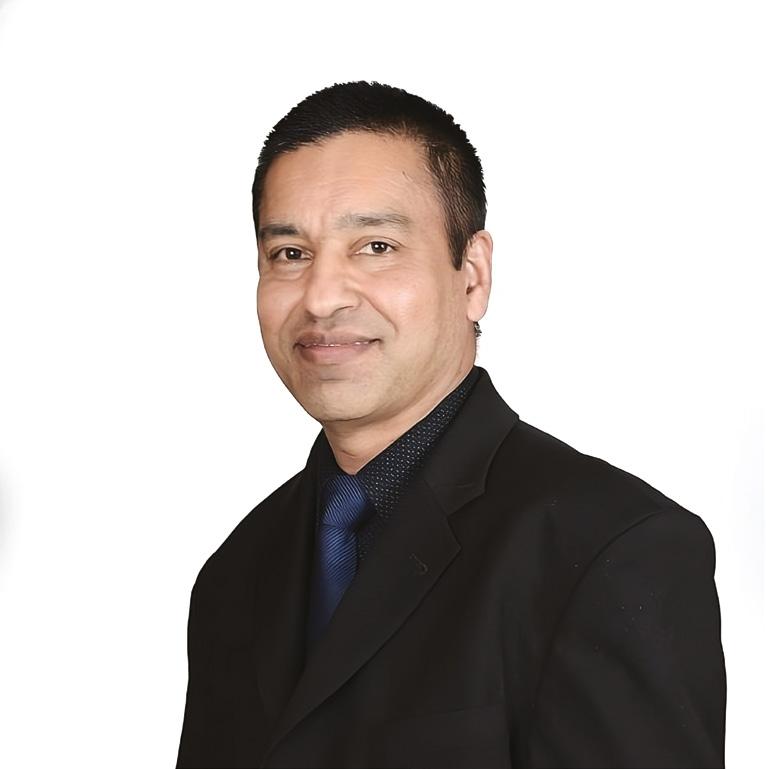
Service delivery is a significant challenge, with issues such as inadequate infrastructure, staff shortages, and poor management affecting the quality and efficiency of services.
What are the challenges in the private sector?
The private sector faces numerous challenges for both organic and inorganic growth. Rising costs and interest rates, the tight labour market, longer lead times for inventory and supplies are just some of the factors pressuring cashflows and margins. Private sector leaders need to carefully balance their responses to short-term issues while maintaining a long-term vision for growth. Collaboration is essential. Public-Private Partnerships (PPPs) can provide public services or infrastructure projects. PPPs offer several benefits to the public sector, including improved infrastructure, increased efficiency, reduced costs, enhanced service quality, and job creation.
What have been your best –and worst – financial moments?
My best financial moment was during my tenure as a CFO and Acting CEO of financially turning around Pikitup SOC Limited (a municipal entity within the City of Joburg) by increasing the profits by more than R1bn in five years and rendering the entity solvent for the first time in its history. It was also the first time it achieved a Clean Audit from the Auditor General of South Africa. As a result, I was nominated as a finalist in the Annual CFO Awards in 2016, effectively making me a Top 20 CFO in South Africa.
My worst financial moment was selling my first property, which I bought in 2001 for R235 000. It was a two-bed, two-bath apartment on the beach in Umdloti, KZN. In 2002, I relocated to Joburg and rented it out and two years later after the lease expired, I sold it to the tenant for R500 000, which I thought was an excellent return on investment. However, the market value of the apartment is currently R2.5m.


30 June 2024 NEWS & OPINION 4 www.moneymarketing.co.za IMAGES Shutterstock .com Earn your CPD points The FPI recognises the quality of the content of Money Marketing ’s June 2024 issue and would like to reward its professional members with 2 verifiable CPD points/hours for reading the publication and gaining knowledge on relevant topics. For more information, visit our website at www.moneymarketing.co.za
What are some of the biggest lessons you have learnt about the finance industry?
To achieve long-term success in finance, it’s crucial to understand and mitigate risk through effective risk management. Diversification is key in spreading investments across various asset classes, sectors and geographies to minimise risk. It’s important to prioritise time in the market over timing the market, as longterm investing tends to outperform short-term trading. Harnessing the power of compound interest by starting to save and invest early is a powerful strategy. Being aware of fees associated with investments is essential, as they can eat into returns. Discipline and patience are necessary. Staying aware of changing regulations and their effects on investments is crucial as regulatory environments impact markets. Additionally, financial planning should be holistic, considering your entire financial situation rather than just individual investments. When faced with complex situations, it is recommended to seek professional advice from financial advisers or experts.
What makes a good investment in today’s economic environment?
There are several key strategies to consider. Diversification is important as it minimises risk. Low-volatility investing focuses on stable assets that can weather market fluctuations. Taking a long-term focus means holding onto investments for extended periods rather than seeking quick gains. Sustainability is another factor to consider, with a focus on investing in companies with strong environmental, social and governance credentials. Innovation involves investing in emerging technologies
and industries with growth potential. Dividend yield investing focuses on stocks that pay regular income through dividends. Growth potential investing involves identifying companies with strong growth prospects. Value investing looks for undervalued assets that have the potential for long-term appreciation. One important aspect is maintaining liquidity by keeping a cash reserve available for opportunistic investments. This allows investors to take advantage of favourable market conditions or seize potential investment opportunities that may arise. Work with experienced investment managers or financial advisers who possess the necessary expertise. Additionally, regular portfolio rebalancing is crucial to maintain an optimal asset allocation, which involves reviewing and adjusting investments periodically. Tax efficiency involves evaluating the tax implications of investments and optimising tax strategies. Remember, a good investment strategy is tailored to your individual financial goals, risk tolerance and time horizon.
What macroeconomic realities are currently on your watchlist?
Rising inflation is a major concern, driven by supply chain disruptions, energy costs and the ongoing economic recovery. This has led to higher prices for goods and services, putting pressure on consumers and businesses. The Reserve Banks’ decisions on interest rates are also important, as rate hikes and quantitative tightening can impact borrowing costs and economic growth. Geopolitical tensions, such as conflicts, trade wars and political instability, are affecting global trade, investment and economic stability. Additionally, high levels of global debt, including government, corporate and household debt, pose a threat to financial stability and economic
More consumers seek help in a tough environment
BY BENAY SAGER Executive Head of DebtBusters
Persistently high interest rates and inflation – especially food inflation – continue to erode consumers’ disposable income, while a lack of any meaningful economic growth is constraining salaries.
Despite this, debt-to-annual-income ratio has remained stable for the past three quarters at 107%. While lower than 2023 levels, this is still high.
These are some of the findings from DebtBusters’ Q1 2024 Debt Index. The quarterly analysis of data from debtcounselling applicants also found that demand for debt management increased, with debt-counselling enquiries rising by 22% and the use of online debt management services up by 30% compared to the same period last year.
Benay Sager, executive head of DebtBusters, says although the improvement in overall debt levels combined with consistent monthly debt repayment trends are positive, the impact of increased interest rates on asset-linked debt is particularly evident in the 40+ age category.
The average interest rate for a bond has increased from 8.3% per annum in Q4 2020 to 12.3% in Q1 2024. For a R1.5m
bond, this adds an extra R4 000 per month to the repayment amount.
“What also continues to be apparent is how higher-income earners are using credit to offset the dual impact of inflation and interest rates – now 475 basis points higher than in 2020. These consumers typically have more short-term loans than those in other income bands and devote a greater proportion of their income to repaying debt.”
“Higher-income earners are using credit to offset the dual impact of inflation and interest rates”
Compared to the same period in 2016, when DebtBusters first began analysing the data, the Q1 2024 Debt Index found: Purchasing power has diminished by 47%. Nominal incomes are 1% lower than in 2016, while the cumulative impact of inflation over the eight years is 48%. While some income groups saw
growth. Currency fluctuations, particularly with the US dollar, are impacting international trade and investment. Fluctuations in commodity prices, such as energy, metals and agricultural products, are influencing inflation, trade and economic growth. Trade policies are undergoing significant shifts, with changes in global trade agreements, tariffs and protectionism impacting international commerce and economic integration. Technological advancements are occurring at an unprecedented rate, leading to significant transformations in industries, employment patterns and economic structures. The transition to sustainable energy sources and environmental concerns are significantly influencing economic growth, investment and global cooperation.
What are some of the best books on property/ finance/investing/leadership that you’ve ever read — and why would you recommend them to others?
I recommend these classic books because they offer valuable insights, practical advice, and timeless wisdom from experienced authors and experts in their fields.
Rich Dad Poor Dad by Robert Kiyosaki – on financial literacy and building wealth through property.
The Intelligent Investor by Benjamin Graham – on value investing and long-term wealth creation.
The Little Book of Common Sense Investing by John C. Bogle – A straightforward guide to index fund investing.
The 7 Habits of Highly Effective People by Stephen Covey – A self-help book for personal and professional growth.

real increase in incomes, on average the trend was slightly downwards. The debt-service burden is high, with the average debt-counselling applicant using 62% of net income to repay debt. The situation is worse among higher income earners. The debt-to-income ratio for people taking home more than R20 000 per month is 127%, while it is 172% for those earning R35 000 or more. These ratios are at or close to the highest ever. Top earners have unsustainably high levels of unsecured debt. While average unsecured debt levels are up 14% compared to 2016, this is lower than recent quarters and is a welcome trend. What is concerning is that for people earning R35 000 and more, unsecured debt levels are 41% higher. This is in line with inflation and indicates that without meaningful salary increases, these consumers are using debt to supplement their income. The average interest rate for unsecured debt is now at an eight-year high of 25.7% per annum.
Sager says that the growth in debt counselling enquiries and use of online debt-management tools is positive as it
indicates more consumers are trying to become financially sustainable.
Last year, the free subscriber base for online debt management tools on www.debtbusters.co.za grew by 82% compared to 2022. These include Debt Radar, which assists subscribers to manage their debt. A new tool, the Debt Sustainability Indicator, shows subscribers the percentage of their income required for debt repayments and how to make the ratio more sustainable.
For those consumers who successfully apply for debt counselling, unsecured interest rates can be reduced by over 90%, from an average of 25.7% to 2.6% per annum. This allows expensive debt to be paid back faster. Vehicle debt and balloon payments can be serviced over a meaningful period, with the average financed vehicle interest rate of 15.4% per annum negotiated down to a more manageable level.
Sager says the number of people successfully completing debt counselling has increased tenfold since 2016. Those who obtained clearance certificates during the first quarter of 2024 paid back over R600m worth of debt to creditors while they were in debt counselling.
NEWS & OPINION 30 June 2024 www.moneymarketing.co.za 5
SA still receiving a steady stream of foreign direct investment inflows

According to PwC South Africa’s fourth South Africa Economic Outlook report for 2024, it would be a welcome surprise to many South Africans to learn that, despite the country’s many challenges, our economy still attracted almost R100bn in FDI inflows in 2023 – equal to 1.4% of GDP. In fact, while some might expect South Africa’s investment outflows to be larger than inflows, the country has seen a net FDI inflow (inflows minus outflows) in every year since the global financial crisis.
South Africa has many positive attributes for foreign investors, including world-class financial services and communication industries, a deep capital market, quality tertiary institutions producing graduates with internationally comparable qualifications, abundant natural resources (including renewables), a strategic geographical location for entry into the rest of Sub-Saharan Africa, a transparent legal system, and a certain degree of political and policy stability, among many other features.
The perception among non-residents of South Africa’s public governance and business ecosystem are ‘moderately positive’ on average, according to data and classifications from research by nation branding experts Bloom Consulting. PwC’s review of this data shows that international perceptions of South Africa’s public governance and business ecosystem echo the results from other international benchmarking reports: that South Africa’s performance is near the middle of the pack when countries are ranked, and not as dismal as some might think.

For example, when considering the country’s economy and business ecosystem, the average perception score between those familiar and those who are unfamiliar with South Africa indicate a ‘moderately positive’ view on the local business environment. This is in line with, for example, the Venture Capital & Private Equity Country Attractiveness Index 2023 produced by the IESE Business School that ranked South Africa 66th out of 125 countries. This placed South Africa near the middle of the country list – something to be moderately positive about – and in the company of countries like Malta, Croatia and Slovakia.
From an international perspective, Olusegun Zaccheaus, PwC West Africa Strategy& Leader, says: “Despite its challenges, the South African economy is more diversified and stable compared to many other African economies. The country has a very strong financial services and deep capital market, which is more sophisticated than most markets in Africa. South Africa’s banking industry offers clients access to a comprehensive suite of financial instruments and services alongside a robust banking regulatory framework that ensures the safety and soundness of financial institutions and their clients.”
Data from the South African Reserve Bank (SARB) shows that the cumulative value of foreign liabilities (inward investment stock) totalled nearly R3tn in 2022 (the latest available data). The manufacturing industry held the largest share, accounting for 38.5% of liabilities, followed by mining (24.2%) and financial services (20.0%). South Africa’s factory sector is home to production facilities owned by some of the world’s largest producers of vehicles, food products and building materials, among others.
To understand the economic impact of FDI, we modelled the contribution to the economy of a R5bn brownfield capital investment in a local automotive manufacturing facility. This simulates the investment needed to upgrade an existing factory to produce a new model line. Investing this money in the upgrade of an existing plant – with 58% of the money spent locally and 42% on imported equipment – would create R3.5bn in additional national GDP, create and/or sustain 9 000 jobs during the upgrade process, and contribute R673m to the fiscus.
Lullu Krugel, PwC South Africa Chief Economist, says: “South African businesses need to be awakened to the possibilities that foreign investment offers them and the country, as FDI can play a significant role in business and
economic development. It provides local industries and the economy with capital inflows, expansion of business into new markets, cost reduction through economies of scale, and skills enhancement of domestic employees.”
“Our economy still attracted almost R100bn in FDI inflows in 2023 –equal to 1.4% of GDP”
At a company level, the advantages of FDI are easy to comprehend. These include, among many other benefits, the expansion of business into new markets, cost reduction through economies of scale as part of a larger international commercial entity, and skills enhancement of domestic employees through exposure to new technologies.
In PwC’s experience, potential foreign investors are looking for three specific things from prospective investment targets in South Africa:
A demonstrated track record of commercial sustainability across all the systemic crises the country has experienced over the last 30 years. This can be achieved through conducting a financial due diligence (FDD).
Demonstrating that they are well positioned to maintain their performance into the future. That means having relevance in a growth industry underpinned by strong fundamentals. This can be achieved through conducting a commercial due diligence (CDD).
• Demonstrating capabilities that can be exported to solve emerging issues in other territories.
An FDD provides peace of mind to buyers by analysing and validating the financial, commercial, operational and strategic assumptions being made. It uses past trading experience to form a view of the future maintainable earnings, key value drivers, inherent risks in the business and confirms that there are no ‘black holes’. In turn, a CDD assesses the historical and forecast assumptions and performance from the perspective of the markets, customers, competitors and internal capabilities of the organisation. The due diligence provides insight of the growth projections used as a basis for the proposed deal.
For more information on the PWC report, please visit www.pwc.com
30 June 2024 NEWS & OPINION 6 www.moneymarketing.co.za IMAGES Shutterstock .com
Giving your client the (h)edge
BY MIKE TITLEY
Last week while I was driving home, listening to one of my favourite podcasts, an interesting discussion came up on hedge funds. While I enjoyed the coverage of hedge funds, I found the tone of the conversation dressed in fear and wariness. It was acknowledged several times in the interview that hedge funds confuse the average investor. This may be true when compared to an equity fund, which intuitively makes sense to the man on the street; however, try explaining an income fund which uses bonds, FRNs, ILBs, structured notes and other instruments wrapped in colloquial jargon. Investors trust these lower heartbeat income products with their most sensitive short-term investments, often without regret. However, unexpected events can occur, even in income funds, as seen recently when Bridge Taxi Finance defaulted on their loans.
I agree that investors should not go blindly into any investment, and hedge
funds do require a bit more understanding, but over time they have proven their value add to the investment mix.
By their very name, hedge funds, they should instil positive risk management sentiment for investors, ‘hedging your bets’. With a broader toolbox, hedge funds can manage the various possible downside scenarios while not giving up all of the upside. A typical hedge fund may have a starting point of aiming to capture 2/3 of the upside, while mitigating 2/3 of the downside. By missing most of the drawdowns, the funds more than make up for not participating in all of the upside. But given their range of investment opportunities, different hedge funds will seldom behave similarly and may be styled to capture less of the downside or more of the upside. Correlation matrices illustrate how effective hedge funds are at diversifying a portfolio relative to both asset classes and other hedge funds.
The other notable point made during the
discussion was how some hedge funds can blow up in times of extreme stress and black swan events. While this can be proven internationally, within South Africa, our hedge fund industry has proven itself relatively resilient through each of the last few crises. The below chart shows the average Long Short and Market Neutral Fund in last few crises.
The interviewer questioned whether survivorship bias was at play in the hedge fund industry. After a bit of researching with HedgeNews Africa, the attrition rate of hedge funds in SA is between 7% to 8% on average over the past 14 years. This is in line with funds in the unit trust industry where smaller funds fall out or are amalgamated into new strategies.
Many steps have been taken to improve hedge fund access and regulation over the years. Most of the tried and tested Retail Investor Hedge Funds (RIFs) are now listed on major platforms, offering the man on the

street access to some of the best investment minds in the country. These funds are limited to 2x gearing, much less than one would typically take on a house with a bond. An important point to make is that RIFs are traded daily with daily liquidity. They are governed by the same regulations and requirements as unit trusts in South Africa, limiting any fund closures or exit penalties.
With long track records, established processes and philosophies, the experienced portfolio managers usually have their own wealth invested in the funds alongside their investors. At Laurium, we believe that hedge allows us to express our view in the most effective way. Please visit our website to view and invest in our range of hedge funds. www.lauriumcapital.com
A fund for stability and certainty in your portfolio
BY IAN SCOTT Head of Fixed Income at Momentum Investments
Just as individuals rely on the banking market for overdrafts and credit cards, companies and state-owned enterprises (SOEs) turn to capital markets to finance large projects. This is referred to as the fixed interest market. Fixed interest markets, also known as long-term debt markets, involve debt maturing in over a year. Long-term debt, such as bonds, is a liability for issuers like companies or SOEs, while investors treat them as assets. Long-term assets in capital markets have durations of three, five or 10 years, with a set maturity date. Investors receive regular coupons, typically quarterly or semi-annually, representing the bond’s annual interest rate paid from issuance to maturity as a percentage of its face value. In a portfolio, fixed income plays a crucial role, offering stability and certainty, unlike equities. While equity dividends fluctuate daily, fixed income ensures investors know their

invested money’s duration over three, five or 10 years, and that every year they’re going to receive a certain percentage of interest, including on the maturity date. It provides a stable income stream because it is interest-bearing, and gives stability in a portfolio against other potentially more volatile components of the portfolio, like equities.
Fixed income is not just about one asset class – bonds – which is one pillar of it. This includes Government Bonds, SOEs and Government Guaranteed Bonds. The second pillar of an overall portfolio is a cash component, which is essential in volatile markets. The third pillar is exposure to credit to optimise risk-return trade-offs. The fourth pillar we would include is Inflation-Linked Bonds because that is one of the two ways to protect your savings against inflation. The fifth pillar would be the market that is opening up and exciting us – private debt markets – where an investor can get exposure to the institutional unlisted market. In the past, private debt markets were perceived as unlisted, unrated and high-risk. We believe the contrary: We are finding great quality companies that may not be creditrated or listed but we know the balance sheets are strong. Public-private partnerships are the new way in which South Africa expects to finance infrastructure with partnerships
between government and private sector institutions. Those entities will come to the private debt markets to finance large capital projects, not necessarily on the JSE-listed market. The Momentum Income Plus Fund is the vehicle for investors to get exposure to private markets.
The Momentum Income Plus Fund aims to maximise income derived from credit instruments primarily domiciled in South African debt capital markets. It is suitable for investors with a low-to-moderate-risk profile who are looking for the highest possible income yield and stability on capital invested. In an investment portfolio, the Momentum Income Plus Fund is a good diversification away from more risky investments like equities , with an investment term of three or more years. Its low correlation to other fixed interest funds and asset classes makes it a valuable building block for portfolios.
Through a monthly debit order of around R500, an individual can get access to the private institutional debt market and have access to big infrastructure spending that we are going to see in South Africa, and the financing thereof. It is an exciting opportunity for individual investors to access this market.
For more information on the Momentum Income Plus Fund, please visit momentum.co.za.
NEWS & OPINION 30 June 2024 www.moneymarketing.co.za 7
Business Development and Marketing at Laurium Capital -13.2% -16.7% -7.5% -2.4% -9.1% -3.2% 0.4% -2.6% 0.3% -20% -15% -10% -5% 0% 5% GFC Sept 2008 Pandemic 2020 Inflation Crisis 2022 SA Equity SA Long Short HF Ave SA Market Neutral HF Ave 5 4 3 2 1 Hedge Funds 1.00 Laurium Aggr HF 1 1.00 0.82 Laurium MN HF 2 1.00 0.19 0.18 Hedge Fund 1 3 1.00 0.22 0.38 0.45 Hedge Fund 2 4 1.00 0.39 0.82 0.26 0.46 Hedge Fund 3 5 5 4 3 2 1 Market Indices 1.00 Laurium MN HF 1 1.00 0.82 Laurium Aggr HF 2 1.00 -0.33 -0.29 SA Cash (STeFi) 3 1.00 0.03 0.19 -0.01 SA Bonds (ALBI) 4 1.00 0.46 -0.15 0.70 0.34 SA Equity (SWIX) 5
Source: Morningstar, HedgeNews Africa
Source: Morningstar. Correlation ranges between -1 and 1. The lower the value, the lower the correlation between the comparison. Underlying data run from 1 March 2013 to 29 Feb 2024
Figure 1: Correlation Matrices versus other hedge funds & against SA indices
Figure 2: Largest monthly drawdowns in recent crises, compared to hedge funds
Momentum Collective Investments (RF) (Pty) Ltd (the “Manager”), registration number 1987/004287/07, is authorised in terms of the Collective Investment Schemes Control Act, No 45 of 2002 to administer Collective Investment Schemes (CIS) in Securities. The Manager is the manager of the Momentum Collective Investments Scheme. Standard Bank of South Africa Limited, registration number 1962/000738/06, is the trustee of the scheme. CIS’s are generally medium to long-term investments. The value of participatory interests may go down as well as up and past performance is not necessarily a guide to the future. The terms and conditions, a schedule of fees, charges and maximum commissions, and additional risks are available on the minimum disclosure document (MDD) and quarterly investor report (QIR) for each portfolio which is available on momentum.co.za All performance figures are net of fees and represents the A class in each portfolio.
Who let the CATs out?
BY RONALD RICHMAN Chief Actuary at Old Mutual Insure
The sheer number of weather-related catastrophes over the past few years, and last year in particular, has shaken the foundation of the insurance market, signalling a looming crisis. Can insurance still be counted on to pick up the pieces when things fall apart?
The ominous rumblings of climate change have reached the insurance industry’s doorstep, and the forecast is troubling. This is the view of Ronald Richman, Chief Actuary at Old Mutual Insure, who says that globally, weatherrelated events are threatening to cause an insurance crisis. In South Africa, insurers are bracing for its impact.
“While the country used to be a Catastrophic Event (CAT) free zone, the scale and magnitude at which disasters have taken place recently means we are now experiencing a dramatic shift in the CAT landscape,” says Richman.
In 2023, Old Mutual Insure recorded 10 weather-related claims events, of which three were significant, running into millions of rands. These were the Western Cape storms in June and then again on Heritage Day weekend in September, as well as the Gauteng and Mpumalanga hailstorm in November 2023.
This is not a phenomenon unique to South Africa: globally, severe weather is impacting the sustainability of the insurance industry in new and unexpected ways. Across the world, Richman says data shows that severe convective storms were predominantly responsible for CAT losses, accounting for 68% of global insured natural catastrophe losses in the first half of 2023. Severe thunderstorms in the US led to $34bn in insured losses, some 70% of total insured CAT losses, during the same period – an unprecedented level
of financial damage in such a short time, according to Swiss Re Group’s Sigma publications. Whereas large single events, such as hurricanes or earthquakes, have often been the driver of record CAT losses in previous years, data from 2023 suggests that smaller events were the main issue during 2023. This was likewise the case in the South African environment.
In addition, 2023 was the hottest year on record, with scorching temperatures driven by climate change and further amplified by El Niño – a naturally occurring climate phenomenon that takes place every two to seven years –and other cyclical weather phenomena. In 2023, some experts said that the US economy is overexposed to climate risk in the same way that it was overexposed to mortgage risk in 2008, a major cause of the catastrophic financial crisis at the time.
“Given this picture, it is not farfetched to believe that climate change has the potential to destabilise the global insurance industry, with ripple effects for SA,” says Richman. Signs of stress are already emerging in several parts of the United States, with companies withdrawing coverage from California and Florida.
He says that structural changes in the reinsurance market have compounded the challenges.
“While many of the recent events have not been unprecedented, insurers have experienced them as particularly acute losses hitting their bottom lines and capital reserves. This is due to reinsurers taking significantly less risk from these types of events, leaving insurers unable to smooth out the losses over time,” says Richman.
In 2023, according to research undertaken by PwC, reinsurers again ranked climate change as the most

GRAPH 2: CAT claims will continue to increase volatility and make reinsurance expensive, according to

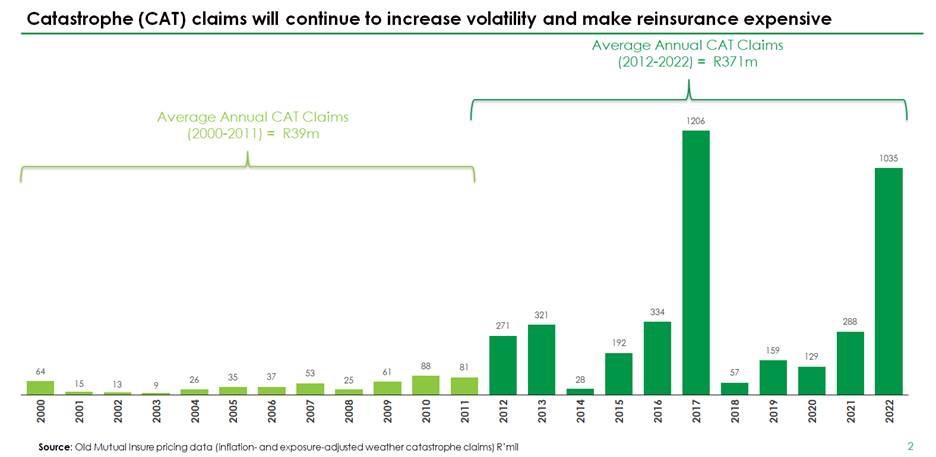
significant risk facing the sector. According to Moody’s, reinsurers are feeling the pinch as they accumulate losses from customerfacing insurance companies. To counter this, many are raising prices, limiting coverage, and even exiting some markets to improve returns.
“This structural shift in the reinsurance market has far-reaching implications, demanding a fundamental re-evaluation of how the market approaches risk and pricing,” says Richman, emphasising that contrary to popular belief, profit margins in the traditional lines of business in the non-life insurance industry are slim. “This, together with the convergence of inflationary pressures and losses from CAT events, means that we are in a pressure pot, ready to bubble over.”
He says that for insurance to be sustainable, the right price must be charged for cover that reflects the true cost of risk in the current volatile climate.
“Otherwise, you jeopardise the trust placed in the insurance system to be there when things fall apart,” says Richman. “To fund the level of coverage policyholders have previously enjoyed, price increases will be necessary over time to account for these losses and needs to be done in a manner that reflects the true risk posed by each policy.”
He adds that it is not all bad news, as sophisticated modelling techniques and innovative solutions are being explored to better quantify the rising climate risks. These should help in navigating these turbulent waters.
Earlier in 2024, Old Mutual Insure announced an innovative new approach to capturing climate change data and aligning this with the insurance policy experience to help close the gap between
“Globally, severe weather is impacting the sustainability of the insurance industry in new and unexpected ways”
the prediction and pricing of weatherrelated risks. It is the first project of its kind in SA to overlay climate-data with claims-data.
But collective action is imperative.
“Mitigation efforts are essential. Education is key, as consumers must understand the importance of risk management and asset protection against climate change,” says Richman. “In addition, public-private partnerships can help address underinsurance in the SA market and spread risk more equitably. Currently, there isn’t a structure for this type of solution, unlike in other parts of the world where it has been introduced successfully.”
He points to Flood Re, which is a flood reinsurance scheme in the UK – a joint initiative between government and insurers to make flood cover more affordable.
“In South Africa, where structural deficiencies exacerbate the disparity between the insured and the uninsured, a similar approach is warranted. The insurance industry in South Africa has the breadth and depth of knowledge and skill, coupled with a desire to help and be a solution to the problem. Ultimately, this would ease the burden of these events on all stakeholders in SA,” concludes Richman.
30 June 2024 NEWS & OPINION 8 www.moneymarketing.co.za IMAGES S upplied
GRAPH 1: Old Mutual Insure claim events in 2023
data from Old Mutual Insure
Using AI & Advanced Analytics to beat insurance fraud in South Africa
BY STEPAN VANIN Regional Leader of Insurance Business Advisory, META & APAC at SAS
Despite higher inflation, interest rates and cost of living, the South African insurances market experienced a revival during the last two years, with the gross written premium across the local insurances market expected to show an annual growth rate of 5.14% from 2024 to 2028 (CAGR 2024-2028), achieving a market volume of US$100.30bn by 2028. While cloud and advanced data analytics adoption remain catalysts to driving innovation and faster, more accurate intelligent decisioning, and thereby growth for modern insurers, the rise and increased sophistication of insurance fraud remains a top tier threat.
Significant steps have been taken to address fraud in the local insurances markets. In fact, reporting on 2022 data, the Association for Savings and Investment South Africa (ASISA) recorded that overall the local insurance industry saw a R77m loss due to fraud and dishonesty; however, losses amounting to R1.1bn had been prevented.
Despite this, with the advent and accessibility of artificial intelligence (AI) in recent years, SAS believes that the world is entering a Dark Age of Fraud. Fraudsters are already leveraging sophisticated toolsets based on AI and machine learning to propagate financial crimes. For instance, AI and deepfake technology are helping fraudsters hone their multitrillion-dollar craft. Phishing messages are more polished. Imitation websites look stunningly legitimate. A crook can clone a voice with a few seconds of audio using simple online tools.
Given the size of the insurances market in South Africa, insurers are being spurred into action.
“Based on worldwide benchmarks, fraudulent claims comprise 3-7% in total claims number and up to 20-30% in claims amount paid. That’s why Motor, Health and Life
Insurers must constantly modernise their fraud detection systems to address the increased sophistication of financial crimes also fuelled by growing poverty. Fortunately, both regulation, competition and growing fraud complexity pushes insurers to rethink how they can leverage technologies like graph analysis, statistical anomaly detection, computer vision and text analytics to protect their business operations while also maintaining top level service to the decent customers,” says Stepan Vanin, Regional Leader of Insurance Business Advisory, META & APAC at SAS.
This is where the adoption of AIenabled solutions that integrate AI and machine learning capabilities becomes essential. For example, SAS solutions enable insurers to detect suspicious activities through the lifecycle of a claim using a whole spectrum of technologies.
Sophisticated machine learning algorithms combined with a library of 200+ industry-validated business scenarios allow detection of strange claim circumstances and suspicious behavioural patterns. Automatic mathematical graph analysis adds more here by identifying typical collusion schemas between claim participants. Finally, computer vision helps to detect reused or corrected photos submitted in other claims months ago. The technology can also be used to stop potential fraudsters from taking out new policies at the point of policy inception. It empowers insurers to collect, manage and analyse intelligence from any source to improve
operational efficiency and effectiveness in the ongoing war against fraud.
AI provides insurers with access to tools that can take and digest data and create relationships between variables that they might never have thought about. AI also assists insurers to price and manage risk much better than before.
“Fraudsters are already leveraging sophisticated toolsets based on AI and machine learning to propagate financial crimes”
“An AI-enabled solution can help increase the accuracy and speed of agent fraud detection by using an analytical approach, anomaly detection techniques, and machine learning. Using such an integrated platform can also centralise and automate fraud detection logic in a single decisioning point while reducing investigation time and increasing the efficiency of investigations,” says Itumeleng Nomlomo, Senior Business Solutions Manager at SAS in South Africa. Currently, many insurers rely on basic approaches to detect agent fraud – at the application and claims settlement stages. Very few fraud cases are detected due to a lack of an integrated process between automatic detection and case investigation. SAS assisted one of its global insurance customers in increasing the accuracy and speed of agent fraud detection by using an analytical approach. This centralised and automated fraud detection logic in a single decisioning point. The result was an up to 40% increase in detected and confirmed agent fraud cases. It has saved the business millions of dollars in just one year in prevented losses and has reduced investigation time from several weeks to a few hours.

“With SAS, companies can use AI and machine learning techniques to identify which types of insurance transactions are likely to be fraudulent. AI techniques, including adaptive machine learning and unsupervised intelligent agents, can predict fraudulent transactions in real-time based on changes and inconsistencies in customer behaviour patterns,” adds Vanin.
Finding insurance fraud faster will enable organisations to stop it sooner. More importantly, by reducing false positives they can improve the efficiency of investigations.
“Going with a hybrid analytics approach that uses multilayered detection methods to find fraud at the individual claim or new business transaction phases, will contribute significantly to reducing the financial impact of fraud. By reducing false positives with AI and machine learning, insurers can use analytics to ensure that the alerts highlighted for triage are significantly more likely to be provable fraud,” says Nomlomo.

Itumeleng Nomlomo,
TECHNOLOGY FEATURE 30 June 2024 www.moneymarketing.co.za 9 IMAGES Shutterstock .com
SAS and all other SAS Institute Inc. product or service names are registered trademarks or trademarks of SAS Institute Inc. in the USA and other countries. ® indicates USA registration. brand and product names are trademarks of their respective companies. Copyright © 2022 SAS Institute Inc. All rights reserved.
Senior Business Solutions Manager at SA S
The love-hate relationship between financial planning and technology
BY FRANCOIS DU TOIT CFP® PROpulsion
The financial planning profession and advice industry are changing fast because of technology. Financial planners, advisers, wealth managers and advisory firm owners must adapt to this changing environment. This article will discuss important aspects of using technology in financial planning without losing the vital human connection.
The need for a unified system
Many financial advisers wish they had one system that could do everything for them. However, this is not realistic. Advisers often end up with systems that are based on what others use or what is cheap, which leads to dissatisfaction and wasted potential. Some try to build their own software, but this usually fails because they lack the skills. The answer is to create a technology stack – a mix of top-quality software that suits specific needs. But be careful not to make such a technology stack too complex or sophisticated. The right technology depends on the practice’s needs and how the technology can improve
rather than interfere with operations. Technology should be a benefit, not a burden. It should allow for deeper, more advanced analysis rather than just making things faster.
Start with the business, not the technology
The main thing is to understand that technology is just a tool, because that helps you see the bigger picture. No tool is useful unless you know what the goal is that you are trying to achieve. Yet, this is what most people do. We get the tool before we know what we want to accomplish.
Everyday AI and game-changing AI
AI is changing financial services and our lives in a way never seen before. AI tools such as voice assistants and chatbots are examples of everyday AI, which enhance human abilities and simplify tasks. Game-changing AI, meanwhile, adds new value, produces insights, and tackles complex challenges. In the future, financial professionals need to make use of both kinds of AI.

“The main thing is to understand that technology is just a tool, because that helps you see the bigger picture”
Everyday AI can streamline repetitive tasks, increase productivity and improve customer satisfaction. Game-changing AI can help identify new possibilities, develop new offerings and stand out from rivals. Learning about the possibilities of AI and building skills in prompt engineering – crafting questions and commands to get the best outcomes from AI systems – is essential.
Everyday AI is essential for anyone who wants to stay competitive and relevant, as those who don’t use it will fall behind. However, game-changing AI will be limited and inaccessible to many, but it will offer a huge advantage to those who can afford and apply it; at least for now.
Where to tech and when to human
Financial advice can benefit greatly from technology. It can collect and process data, design personalised financial plans, track clients’ progress, and enable communication. However, technology cannot substitute human interaction, which is crucial for establishing trust and identifying clients’ needs.
Financial advisers should leverage technology for data gathering, processing, and reporting. Human interaction should be dedicated to understanding clients’ personal and emotional needs, educating and empowering them, and offering support during difficult times. It’s all about finding the right balance.
Improving customer experience with technology
The way customers interact with financial planners has changed from in-person visits and paper documents to online channels. Some of the technologies that improve customer experience are financial planning software, client portals, AI and chatbots, and VR and AR.
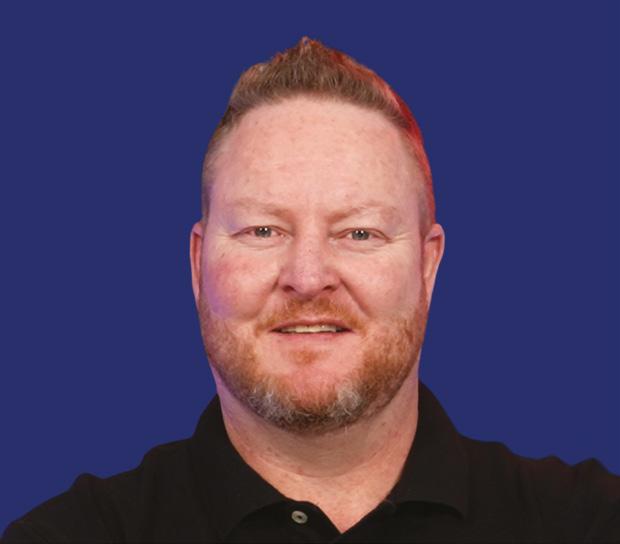
Financial planning software shows current financial outcomes and potential scenarios. Client portals allow safe access to financial information, increasing engagement, and satisfaction. AI tools deal with common questions and offer initial guidance, while VR and AR provide realistic experiences, making financial planning more interesting.
Before riding the AI wave
Financial professionals need to adopt AI to keep up. They should know how to use AI tools, manage and improve data, and work with tech experts. For instance, Microsoft’s Copilot can simplify tasks and make experiences tailored to each user.
AI readiness rests on three pillars: principles (set up clear rules for AI use), data (prioritise relevant data) and security (enforce strong security standards). It is also important to teach staff and clients how to use AI tools and maintain secure communication.
Technology can be a valuable asset that can improve the financial planning process. However, it should supplement, not supplant, human communication. By finding the right mix of technology and human touch, financial professionals can offer effective and customised advice. Keeping an open mind and constantly learning about new technologies will help financial planners, advisers, and wealth managers keep up in this fast-changing industry.
Stay curious!

Francois Du Toit founded PROpulsion, a thriving community for financial planners and advisers focused on helping them belong, grow and thrive. He hosts the PROpulsion LIVE show (every Friday at 8am live on YouTube) with more than 250 episodes and counting, sharing his two and a half decades of experience and engaging with local and international guests to inspire and inform. Committed to learning and using new technology, he is on a mission to change lives at scale. Visit www.propulsion.co.za for more information.
30 June 2024 TECHNOLOGY FEATURE 10 www.moneymarketing.co.za IMAGES Shutterstock .com
The role of technology in assisting FSPs to meet their FICA obligations
BY DOCFOX FICA COMPLIANCE EXPERTS
In recent months, the Financial Sector Conduct Authority (FSCA) has issued several fines to Financial Service Providers (FSPs) for failing to comply with Anti-Money Laundering (AML) regulations. As the FSCA intensifies and continues its enforcement efforts, FSPs are urged to ensure their AML regulatory processes are not only created but actively used and implemented.
Technology has become a critical tool in the fight against financial crimes. From simplifying how businesses onboard their customers, automatically performing ongoing monitoring and risk management , to automating mundane tasks, it has become an essential component of any business.
There is no doubt that software and digital solutions have forever changed how businesses manage their regulatory compliance. But what is it that businesses are finding so useful and why have so many turned to software to assist with their Financial Intelligence Centre Act (FICA) compliance needs?

• Enhanced productivity
The benefit of using an automated solution means that repetitive tasks get completed automatically and mundane tasks (like collecting and filing mountains of paperwork) are removed. In terms of FICA compliance, an example of this is no longer having to manually request nor send countless emails to collect and follow up on customers’ documentation for FICA purposes. Automated software enables you to load a customer with a specific entity type, and it takes care of emailing the customer to ask for the relevant forms and will send a followup email when the incorrect or invalid documentation has been sent.
• Ensure consistent policies and procedures
As a business grows, the task of ensuring everyone is consistently carrying out the correct procedure becomes more complex. According to the FIC Amendment Act, risk-rating your customers, to ultimately determine the amount of due diligence to be done, is
vital and should be consistently carried out whenever you onboard a customer.
Having a configured system that is set up according to your business rules means that when onboarding a client , you can enforce that each client is risk-rated and onboarded consistently across your business, according to your rules.
• Enhance accuracy and streamline client screening processes
Compliance is often an onerous task, and due to its monotonous nature, there is possibility for human error. Automation largely takes away the monotonous work and enables staff to instead focus on decision making. Using a software solution to automate your sanction, Domestic Politically Exposed Person (DPEP) and Foreign Politically Exposed Person (FPEP) screening means that staff no longer have to spend hours searching sanctions lists. As a bonus, software solutions can largely reduce risk more as they have the ability to enable algorithms that skilfully handle
variations in names and spelling, ensuring that nothing slips through the cracks. For example, a solution like DocFox has a watchlist service that provides ongoing, reliable and efficient screening of your customer against a range of international sanctions and watchlists that could indicate potential higher risks to you and your business.
• Keep up to date with the latest regulatory requirements
Software solutions are often built around the latest requirements, with the best providers having an in-house compliance team that ensures the software is up to date with compliance regulations, meaning your business can rely on your software provider to keep you up to date with the latest regulatory requirements.
Implementing a streamlined system to guarantee consistent adherence to FICA across your business with clear central oversight, even with teams working remotely, can give a level of comfort that, should the regulator come knocking, you can rest assured all requirements are met.

TECHNOLOGY FEATURE 30 June 2024 www.moneymarketing.co.za 11

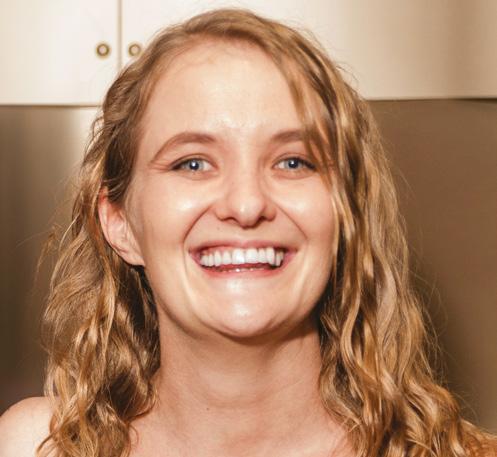
AHuman connection, financial guidance
BY ANGELIQUE BARNARD Coordinator of Daily Adventures, Allegiance Consulting
n adviser can be an Einsteinian equation maestro, and view financial plans in 4D, but their success hinges not only on their financial acumen, but equally on the strength of their relationship with clients. Good client relationships are the foundation of a successful advisory practice.
Building trust and confidence
Trust is the heartbeat of the client-adviser relationship. Clients come to advisers with their dreams, fears and hopes for the future. They seek not just expertise, but a partner in their journey. When an adviser earns a client’s trust, the partnership expands exponentially, each move building on the last, creating a harmonious flow that leads to confident decisions towards a remarkable life.
Enhanced communication
Open and honest communication is vital. A good client relationship ensures that communication channels are always open, enabling advisers to understand their clients’ goals, fears and expectations. This ongoing dialogue helps in tailoring advice that is not just accurate, but deeply personal.
Personalised service
Every client is different, with distinct goals and circumstances. Recognising this, a good adviser offers personalised service, crafting bespoke financial strategies that align with each client’s individual goals. A plan where the client feels valued and understood is a true work of art.
Increased client retention
Retaining clients is as vital as acquiring new ones. A strong client relationship, built on trust and tailored advice, naturally leads to higher retention rates. Satisfied clients are not just loyal; they become advocates, bringing in new clients through the power of word of mouth. This creates a virtuous cycle of growth and stability for the adviser’s practice.
Adaptability and support
The financial landscape is dynamic, with constant changes and uncertainties. A strong relationship ensures that clients feel supported during volatile times. Advisers with solid client relationships can better guide them through market downturns and financial crises.
The heartbeat of technology
Imagine a world where every interaction, every conversation, and every detail about your client’s needs is seamlessly captured and easily accessible. This vision inspired the creation of Allegiance Consulting’s new CRM platform, a tool designed to enhance the human connection at the heart of financial advising. This CRM is more than a software solution; it is the embodiment of the company’s commitment to excellence in client service. It enables advisers to manage tasks, set reminders, track leads and opportunities, and oversee business cases with precision. The platform also facilitates collaboration with your network partners to ensure comprehensive and coordinated client care.
The relationship between financial adviser and client is a beautiful interplay of trust and collaboration. It’s about more than just managing money; it’s about building relationships that endure through the highs and lows of financial markets. It’s about transitioning into a holistic life coach, and being there for your client through the financial and emotional ups and downs. As technology continues to evolve, the Allegiance Consulting CRM platform stands as a testament to its dedication to this collaboration, enhancing the human connection that is so essential to successful financial advising. Invest in these relationships, and watch your practice thrive as you guide your clients through the intricate steps of their remarkable journey.

The Holly Experience: Underwriting simplified with the help of technology
BY AMANDA VAN HEERDEN
Underwriting Consultant at Hollard Life Solutions
In the rapidly evolving insurance landscape, digital transformation is reshaping the way intermediaries interact with clients and process claims.
Just over a year and a half ago, Hollard Life Solutions launched a first for South Africa: a digital tool to streamline the underwriting process and improve the overall customer experience. Known as the Holly Digital Solution, or simply Holly, the programme was designed to assist brokers in streamlining and simplifying their interactions with clients and improving the overall insurance experience for both advisers and clients.
Amanda van Heerden, Underwriting Consultant at Hollard Life Solutions, says, “Hollard recognises the crucial role played by insurance in providing a safety net for consumers in some of life’s unpredictable circumstances. At the same time, we acknowledge that the complexity of the process can sometimes discourage consumers from purchasing certain insurance products.”
Some consumers struggle to understand the processes, while others become impatient with them. Technology can simplify these processes, Van Heerden explains. “Holly was introduced to address some of the challenges faced by intermediaries in completing applications and meeting underwriting requirements. Holly eliminates the back-andforth associated with incomplete information in manual applications by introducing a simplified underwriting
process that enables quicker onboarding and smoother claims processing,” she says.
The Holly Digital Solution tailors the questions it asks to the client’s declaration, and there are fewer medical questions for standard life policies.
Holly is the first fully underwritten digital offering that makes an immediate decision for standard, or mildly impaired applicants when it comes to underwriting. If a client does not accept terms offered by Holly, or if the nature of impairment or sum assured doesn’t qualify for an immediate decision, they can ask for full underwriting, combining the immediacy of digital processing with the precision of manual underwriting.
The uptake of the Holly solution by intermediaries has been mixed. Van Heerden says, “We’ve had an interesting mix in terms of the response from advisers. There is currently a 1:3 ratio of completed Holly applications to manual applications.
“Some intermediaries are adopting it for its operational efficiencies and productivity gains, while others have been slow to take it on because of misconceptions that Holly is a non-underwritten product. However, for those who have embraced Holly, the benefits are clear.”
One of the key benefits of Holly is its impact on the speed of the overall underwriting process. It has eased the demands of SLAs and eliminated the effects of incomplete
information on decision-making, leading to faster processing times and improved service delivery to clients. Holly’s unique features, such as its suitability for all personal applications, regardless of health status and/or the sum assured, make it a valuable tool for intermediaries looking to enhance the quality of services provided to their clients. The option of combining the digital process with full underwriting provides clients with an immediate decision for single impairments or a more precise manual underwriting process with medical and or financial information.
As with all digital solutions, Holly is always evolving, and Hollard Life Solutions continually evaluates its effectiveness as it becomes a familiar feature of the brokers’ customercentric tools. Among its benefits is that it’s the only fully underwritten digital process in the market that offers an immediate decision on standard, or single impairment lives, with or without HIV. The immediate response to clients is a major benefit. It makes it suitable for all personal applications and as there are no returns on incomplete information, it has reduced the time spent on applications. Plans to further enhance Holly in the future include using of third-party data to increase approval rates and lessen the need for medical examinations. There is also the possibility of integrating business insurance into the system, should the adoption rate increase.
TECHNOLOGY FEATURE 30 June 2024 www.moneymarketing.co.za 13 IMAGES S upplied
The impact of tech on forex trading
BY ISAAC MAMOROBELA Managing Director, Flexi Forex Trading College
In the fast-paced world of forex trading, automation is offering traders a new way to engage with the markets. Here's some indepth information about automated forex trading, from its inception to its advantages, drawbacks, and future trends.
What is automation in forex trading?
The foreign exchange market, known for its liquidity and accessibility, operates globally, allowing participants to trade currencies around the clock. Traditionally dominated by large institutions, the market became accessible to individual investors with the rise of online platforms and digital brokers. Automated trading systems, also called algorithmic trading, further democratised forex trading, enabling traders to execute trades based on pre-set rules and criteria.
Automated trading utilises algorithms to analyse market conditions, identify trading opportunities, and execute trades efficiently. Expert advisers (EAs) or forex robots are key components of these systems, autonomously executing trades on popular platforms like MetaTrader. While automation offers benefits such as increased efficiency and reduced emotional bias, it also poses risks, including technical failures and overreliance on algorithms.
Despite these challenges, many traders are drawn to automated trading for its potential to streamline processes and enhance profitability. However, success ultimately depends on a trader’s understanding of both technical and fundamental aspects of trading, as well as their ability to manage risk and adhere to a trading strategy. As technology continues to evolve, the future of automated forex trading holds promise, with advancements in artificial intelligence and machine learning shaping the landscape of algorithmic trading.
Benefits of automated trading
There are numerous problems associated with the human element in trades, which make a compelling argument for automated trading:
• One major reason why traders utilise automated trading is that it removes emotion from the trading experience. This objectivity often leads to greater adherence to the trading plan.
Automated trading allows comprehensive back-testing before live implementation. This rigorous evaluation enables traders to refine their trading idea and ascertain the system’s expectancy, which is the average profit or loss per risk unit.
• Automated trades often execute faster than conventional trades. Even a few seconds’ difference in entering or exiting a trade can greatly impact the trade’s

“Automated trading utilises algorithms to analyse market conditions, identify trading opportunities, and execute trades efficiently”
result. As computers instantaneously react to market fluctuations, according to pre-set parameters, automated systems can issue orders as soon as the trading criteria are met.
• Automated trading systems offer the flexibility for a user to manage several accounts or apply diverse strategies simultaneously. The computer system can scan for potential trading scenarios across various markets, initiate orders, and oversee trades.
Risks associated with automated trading:
While automated trading systems offer numerous benefits, they also come with certain challenges and truths that traders need to be mindful of:
Relying too heavily on automated systems, with a propensity for possible system quirks and technological malfunctions, without human oversight, is bound to lead to significant loss. Automated trading systems require monitoring to ensure that a program is accurate.
Back-testing is a two-sided coin. On one hand, it aids traders in refining their strategies but on the other, it can result in over-optimisation. This happens when a trading strategy is excessively tailored to excel on past data, leading to underperformance in actual market conditions.
• Market conditions constantly change, presenting a challenge for automated Forex trading systems. These systems,
which rely on pre-programmed strategies, may falter when unexpected market conditions – like market volatility – arise. Unlike human traders who can adapt their strategies dynamically, automated systems lack such adaptability, potentially limiting their effectiveness.
Automated trading can incur additional costs. Some brokers might charge extra fees for using a bot on their platform. Furthermore, traders may need to invest in sophisticated software and hardware, which could require programming skills to develop and maintain.
With every new concept comes associated scams. There are a lot of scams going around – some systems promise high profits but aren’t properly built software.
How to identify an ideal expert adviser
To succeed with the use of expert advisers, carefully consider several factors to ensure they align with your trading goals, risk tolerance and preferences. To identify a top-tier trading bot, concentrate on these key aspects:
• Proven performance: Look for bots with a solid track record of profitability over time, backed by transparent performance metrics and comprehensive back testing.
• Effective risk management: Choose bots that prioritise capital preservation through robust risk management features like stop-loss orders and
customisable risk thresholds.
• Customisation options: Opt for bots that offer flexibility in adjusting parameters to align with your trading style and risk tolerance.
• Security and reliability: Ensure the bot operates on a secure platform with reliable encryption protocols, safeguarding your funds and personal information.
• Community support: Select bots with active user communities and reliable customer support channels to assist with any issues or queries.
• Transparent pricing: Evaluate the cost and pricing structure of the bot relative to its features, performance and support.
• Regulatory compliance: Verify that the bot and its provider adhere to relevant regulatory requirements to mitigate legal and regulatory risks.
• User-friendly interface: Choose a bot with an intuitive interface for easy navigation and control, enhancing your overall user experience.
• Reputation and reviews: Research user feedback and independent evaluations to assess the bot’s reputation and reliability.
30 June 2024 TECHNOLOGY FEATURE
Risk disclaimer: Trading foreign exchange on margin carries a high level of risk and may not be suitable to all investors. You should not invest money you cannot afford to lose. The information in this article is provided as general market commentary and does not constitute investment advice. About Octa: Octa is an international broker that has been providing online trading services worldwide since 2011. It offers commission-free access to financial markets and various services already utilised by clients from 180 countries with more than 42 million trading accounts. Free educational webinars, articles, and analytical tools they provide help clients reach their investment goals.
14 www.moneymarketing.co.za IMAGES Shutterstock .com
Could a tax-free savings account be vital to secure your child’s financial future?
BY CAROLINE NAYLOR-RENN COO, 10X Investments
“Idon’t want my kids to go through the same struggles I did.” That’s the mantra most parents have for their children. They may also be aware that their children will face financial challenges they never did. Many jobs, for example, require significantly higher levels of educational attainment than was the case 20 or 30 years ago. Those parents may also know that it will take their children longer to save up for a deposit on their first home, leaving them living at home or renting for longer.
Knowing this, many parents try to give their children as big a financial leg up as possible when they start adulthood. That may mean paying for university, buying their child’s first car, or even helping with a deposit on a home. And unless a parent is in an extremely fortunate position themselves, they’ll need to save and invest to have any hope of providing them with those things.
You could use education investment policies; however, many parents have opened their child’s education policy when they reach 18 only to find that it’s barely enough to cover their first year of studies, never mind a full degree and postgraduate studies.
As such, parents should take advantage of the full range of savings and investment tools available to them when it comes to securing their children’s futures. One of the most powerful, and potentially underutilised, of these tools is the tax-free savings account (TFSA).
Maximising savings
For those who may not be familiar with TFSAs, they were first introduced to South Africa in 2015. The idea behind these accounts is to try and encourage a culture of saving among South Africans, something which has been a major issue in the country for several years now. In fact, the household saving rate in South Africa currently sits at -1.10%. That means that the vast majority of households are spending more money than their current income allows for.
With TFSAs, contributions are not taxdeductible, but any interest, dividends, or capital gains earned within the account are tax-free. TFSA contributions are subject to annual limits set by the South African Revenue Service (SARS). At present, those limits are around R36 000 annually and R500 000 over your lifetime.
Both the growth and income you receive on your investment are tax-free. The value of the fund can, however, grow indefinitely. That means you can enjoy all the upsides of growth without having to worry about any tax pitfalls. In other words, any gains made on the money you’re putting towards your child’s education or first property goes towards those things and only those things.
Timing matters
That sounds great, right? And in many ways, it is. There are, however, a few factors you should consider before opening a TFSA for your child. Key among those considerations is timing. Remember, children generally have very
few tax liabilities. So, if you had another better-performing investment vehicle in their name, they generally wouldn’t be liable for the capital gains and income tax anyway. On the other hand, if you open a TFSA when they’re one or two years old, and start withdrawing when they’re 18 or 19, they could easily end up exhausting their child’s lifetime tax-free allowance.
A better option may be to start using a TFSA later so that your child accrues most of the tax benefits early on in their career when they’re earning the least. This is also a time when saving can be challenging, meaning that it may have a bigger impact. And if they reach the threshold of the taxfree allowance by the time they’re in their late 20s, they may be in a better position to

use it for something truly meaningful, like a deposit on a home.
One tool among many Ultimately, parents need to remember that TFSAs are just one among the many tools available to them when it comes to investing in their children’s future. And part of getting the most out of those tools mean knowing when they’re most effective. It is important to diversify investments for your child’s future. A TFSA can be an incredibly powerful tool but it’s most powerful and most effective when used at the right time.
“With TFSAs, contributions are not tax-deductible, but any interest, dividends, or capital gains earned within the account are tax-free”

EDUCATIONAL POLICIES 30 June 2024 www.moneymarketing.co.za 15
The content herein is provided as general information. It is not intended as nor does it constitute financial, tax, legal, investment, or other advice. 10X Investments is an authorised FSP. IMAGES Shutterstock .com

Protecting financial security: Momentum Life Insurance’s 2023 claim statistics
Momentum Life Insurance’s recently released claim statistics for 2023 reflect a ‘typical’ year free from extraordinary events like pandemics or natural disasters. Although ‘typical’, these claim statistics highlight the unpredictability of life and the essential role of adequate life insurance cover in safeguarding against life’s uncertainties. They also remind us of the importance of undergoing age- and sex-related health screenings,
Myriad claim amounts paid per category:
Mortality: R4.02 billion
which provide lifesaving early detection for many illnesses. Additionally, they reiterate that improved lifestyle choices could mitigate many living benefit claims.
In 2023, Momentum Retail paid R6.5 billion in claims, of which R5.6 billion was accounted for by claims under Myriad, Momentum Life Insurance’s flagship product offering.
Critical illness: R830 million
R258 million Lump
momentum.co.za Momentum is part of Momentum Metropolitan Life Limited, an authorised financial services and registered credit provider. Reg. No. 1904/002186/06
Income protection:
sum disability: R486 million
Death claims
Cardiovascular conditions and cancer were responsible for more than half of death claims (57%) in 2023 and were the top two causes of death for both sexes. Unnatural deaths, respiratory conditions and nervous system conditions made up the balance of the top five causes of death. We had just over twice as many male death claims despite having a roughly even split between the sexes. As one would expect, the proportion of death claims increases with age, with more than 60% of deaths after age 60.
Unnatural deaths, from causes such as accidents (mostly motor vehicle accidents), suicides, surgeries, and homicides, accounted for only 14% of all death claims, of which 85% were for males. 65% of death claims for individuals younger than 30 were unnatural deaths, with motor vehicle accidents being the leading cause.
In 2023, Momentum paid out R120.9 million in terminal illness benefit claims. These claims are paid when a person is suffering from a terminal condition with no hope of recovery, with death expected within 12 months. A sobering insight is that cancer was the cause for 91% of these claims, reflecting the devastating impact of undiagnosed cancers that lead to late-stage claims.
A concerning observation is that 80.5% of the clients who tragically passed away due to a critical illness in 2023 did not have critical illness cover with us. This highlights two concerning potential gaps: Our clients may be underserviced in living benefits, such as critical illness and disability cover, and even those who have cover often do not have sufficient protection in place.
cover, there is a concerning trend of clients having inadequate critical illness cover in place.
The major causes for critical illness claims in 2023
Cancer was the leading cause of critical illness claims at 44%, with cardiovascular, musculoskeletal, and nervous system conditions rounding off the top four causes. Interestingly, females had more claims at younger ages than males, while also representing 41% of claims overall. Another notable observation is that more than half of female critical illness claims were for cancer. In contrast, males exhibited a far higher proportion of cardiovascular claims. Cancer claims accounted for 37% of male critical illness claims, but cardiovascular claims were relatively close behind at 29%.
We know that critical illness incidence increases with age, but it’s not unheard of in younger people, as evidenced by the claim for testicular cancer from a 23-year-old client in 2023 – which again makes the case that these illnesses can occur at any time, however unlikely you think this may be. Critical illness cover is invaluable as it provides financial support while clients are still alive. Despite the importance of such
Lump sum disability and income protection
When we consider the causes of lump sum disability and income protection claims in 2023, we find that the top three causes are the same: musculoskeletal, cancer, and nervous system. We see a change in the fourth largest cause, with visual impairments ranking fourth highest in lump sum disability claims and psychiatric or mental conditions ranking fourth highest in income protection claims.
The major causes for lump sum disability claims in 2023
If we break down income protection claims further, we notice that although the spread is relatively similar between men and women, there is a significant difference between the percentage of musculoskeletal claims, with men accounting for 39% and women accounting for 27%.
The major causes for income protection claims in 2023
Musculoskeletal Cancer Nervous system Psychiatric/ Mental
These claim statistics underscore the importance of comprehensive life insurance cover. From life cover and critical illness to disability and income protection, having adequate life insurance is crucial to provide invaluable financial support and stability in the face of life’s unpredictability. Momentum Life Insurance remains committed to upholding its reputation for reliable claim payouts, ensuring that valid claims are honoured and providing much-needed financial support to clients in times of distress. This commitment, combined with our comprehensive benefits and robust underwriting and claim management processes, reflects our dedication to serving our clients with integrity and compassion.
14% 13% 26% 31%
Respiratory
The major causes for death claims in 2023
Cardiovascular Cancer Unnatural
Critical illness
9% 11% 44% 21% Cancer Cardiovascular Musculoskeletal Nervous system
17% 19% 27% 9% Musculoskeletal
Cancer Nervous system Visual
11% 34% 8% 9%
From diagnosis to recovery: The importance of Critical Illness Income
BY NIC SMIT
Chief Product Actuary at Bidvest Life
Traditionally, lump sum benefits are seen as the solution to providing protection against major health events. Critical illness cover will pay out a lump sum on the diagnosis of a serious illness, and disability cover will pay out a lump sum in the case of a permanent disability. And while there is a place for lump sum benefits, this approach has one major shortcoming.
Neither critical illness cover nor lump sum disability cover will pay out for most of the injuries or illnesses that prevent your clients from working. Critical illness cover only lists the specific conditions that will result in a benefit being paid, and lump sum disability cover requires the life insured to be permanently disabled before a benefit is paid. It is more common than you might assume for someone to be unable to work for months due to a condition that is neither permanent nor included in critical illness cover.
This demonstrates that, when building your clients’ portfolios, it is essential to first cover their most likely risks. Adding income protection benefits will protect them against an inability to earn due to illness or injury. Even so, a traditional income protection policy may still not meet all the needs that come with critical illness diagnoses.
In the case of cancer – which, according to Bidvest Life’s 2022 claims report1 is the most common reason for claiming under critical illness – traditional income protection benefits would only start paying a benefit once the life insured is unable to work. This leaves your clients with a potential gap where they must deal with a life-changing diagnosis but cannot claim on their income protection benefits until the cancer progresses to the point where it prevents them from working. Further to this, cancer often results in intermittent periods where you are physically able to work (consider when cancer patients undergo regular chemotherapy treatments), which means that your client will not receive a constant benefit payout. Not only does this mean that your client has to work to fill those gaps in their benefit payouts, they also constantly need to provide information to the claims assessor to justify the income payouts that they do receive – an additional requirement for a client who is already dealing with a stressful life event.

This is where the advantages of a benefit like Critical Illness Income (CI Income), which guarantees uninterrupted monthly payments for a year on diagnosis, come into play. Policyholders need only submit paperwork once, on diagnosis, and do not have to worry about additional appointments and admin when they are already ill. Moreover, CI Income cover is a lot more affordable than traditional critical illness cover, where the sum assured is often kept low to contain costs. Take Bidvest Life policyholder Nandi* as an example.
After her stage 3 breast cancer diagnosis, Nandi underwent a double mastectomy and breast reconstruction. Her policy provides her with three benefits so that she can focus on her recovery instead of worrying about lost income: a lump sum payment of 100% of her sum assured on diagnosis; a monthly income for the 12 months post-diagnosis through her CI Income benefit; and an additional 15% payout on her Critical Illness Lump Sum (CILS) benefit (over and above the 100% of benefit already paid) specifically for her reconstructive surgery.
Finally, when selecting your clients’ policies, remember that the life insurance industry has evolved to make critical illness cover as comprehensive as possible. Initially, critical illness benefits were designed to cover the four SCIDEP (Standardised Critical Illness Definitions Project) events but now encompass hundreds of different conditions. Yet the return on adding multiple lists of events becomes marginal in comparison to the need for covering the most likely events: cancer, heart attack, stroke and bypass graft. It’s important not to forget that you are far more likely to suffer some conditions than others. Bidvest Life policyholder Nandi* is living proof of the importance of having a combination of benefits in place when cancer strikes.
1Bidvest Life 2022 Claims Report
*Policyholder pseudonym
“A traditional income protection policy may still not meet all the needs that come with critical illness diagnoses”
Helping your clients understand the differences between disability and dread disease cover
BY CLYDE PARSONS Chief Innovation Officer Brightrock
Statistics show that one in five people will suffer from a serious illness at some stage in their life, which is why dread disease and disability insurance are essential. But do clients really understand the intricacies of these types of insurance and how they fit into their portfolios?
We help you to break it down for them. As a financial adviser, you know that both dread disease and disability cover have a place in your client’s financial plan. However, many clients conflate these two benefits or don’t fully comprehend the different needs they cater for, or how they can affect each other. Here’s a back-to-basics guide to help you help your clients understand the differences.
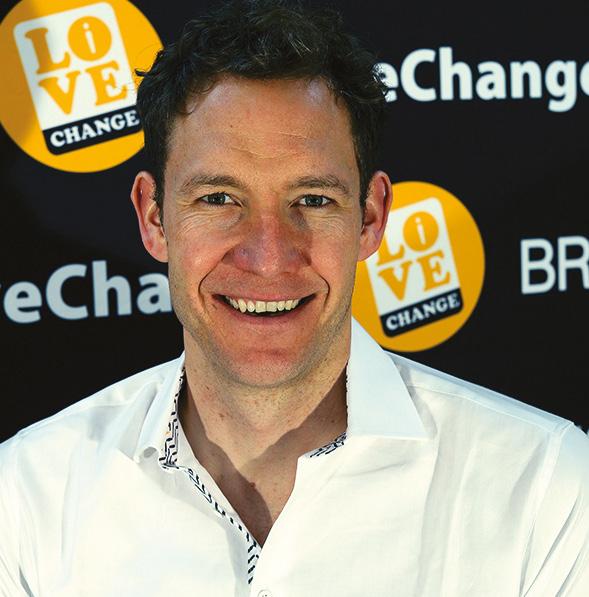
What disability and dread disease benefits cover
1. Disability cover protects your client’s greatest asset, their ability to earn an income. It provides a pay-out to help cover living expenses if they become seriously ill or suffer an injury to the extent that they’ll never work again.
2. Dread disease cover helps pay for additional expenses arising from a life-altering illness or injury that aren’t covered by a client’s medical aid, gap cover, or disability insurance. Examples could be the cost of making alterations to their home if they now use a wheelchair, or paying for a childminder to take care of children when they’re not able to.
When clients need this cover
1. Any person who earns a monthly salary needs to protect their income until retirement age. Younger people need more disability cover, because they have many more years left to work and many more pay cheques to protect before they reach retirement age, when their retirement savings will provide them with a regular income.
2. Anyone who’s concerned about closing the gaps not covered by disability and medical scheme cover needs critical illness cover. The older you get, the more you need dread disease cover, because the risk of suffering a serious illness or injury tends to increase with age. However, this is when it will cost the most, so it’s best to buy this cover (or any life insurance cover) when you’re young and healthy.
Important factors clients should consider when buying disability and dread disease cover
1. Disability cover should thoroughly cover a client’s most important asset: their income. When choosing disability cover, clients should consider how their claims will be assessed – do pay-outs depend on subjective occupational criteria, or objective medical criteria with an occupational underpin to provide claim certainty? How many conditions are covered? Do they need cover that would pay as a recurring amount or as a once-off lump-sum cover? Or do the clients have the flexibility at claim stage to choose how they’d like to receive their pay-out? Where recurring payments are chosen for permanent disability, will the client’s condition be reassessed in claim?
2. Clients should search for the most comprehensive dread disease cover: The number of conditions covered, survival periods (you want to buy cover that doesn’t have a survival period) and pay-out structures are just some the factors clients should consider when buying critical illness cover.
Your great advice can help clients make the best choice
It’s essential that you educate your clients on the differences between dread disease and disability cover to ensure they understand the specific benefits and purposes of each. You can assess your clients’ individual circumstances and recommend appropriate cover based on their needs and financial goals. Review and update your clients’ insurance portfolios regularly to ensure they remain adequately protected. By understanding the distinct features and purposes of dread disease and disability cover, financial advisers can provide valuable guidance to their clients, helping them make informed decisions about their insurance needs and ensuring they receive the protection they deserve.
30 June 2024 DREAD DISEASE FEATURE 18 www.moneymarketing.co.za
Is your finely crafted financial plan a grand masterpiece?
Or will it be let down by traditional life insurance products that don’t match your clients’ needs?

As a highly skilled financial adviser, you know that every financial plan is carefully designed to meet your client’s needs today, and as their life changes. BrightRock’s needs-matched life insurance lets you create a product solution that precisely matches the financial plan you’ve crafted for your client.
Take, for example, claim-stage choice* – an industry first. At claim stage, when your client better understands their medical condition, they can choose between a lump-sum or a recurring pay-out for their income protection needs. Or they might even want to choose a combination of both. Because it is impossible to predict their future needs today.
Only with needs-matched life insurance do you have unrivalled flexibility and efficiency, so that your finely crafted financial plan becomes an enduring masterpiece in your client’s hands.
Get the first ever needs-matched life insurance that changes as your life changes.


















*Terms and conditions apply BrightRock Life Ltd is a licensed financial services provider and life insurer. Company registration no: 1996/014618/06, FSP 11643. Terms and conditions apply.
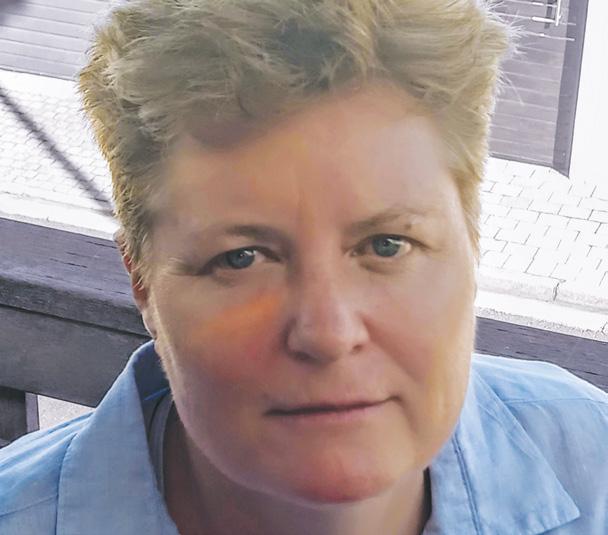
Including Fixed Income in a portfolio gives some peace of mind but, the experts say, investors shouldn’t be too complacent. Nothing is 100% fire-proof. Fixed Income broadly refers to those types of investment securities that pay investors fixed interest until their maturity date, at which point the original amount (principal) is repaid. The asset class includes a wide range of instruments, from fixed deposits and money market funds to multi-asset income funds and bonds.
“Fixed Income as an asset class has grown in complexity and scale over time and is now the foundation of any investment portfolio looking to provide a high degree of income generation with a lower degree of volatility for a specific profile of investor,” says Nadir Thokan, Senior Discretionary Fund Management Specialist at Investment Solutions by Alexforbes.
He explains that Fixed Income can be classified into money market instruments, when the term to maturity is less than 12 months, or bonds (term greater than 12 months). Bonds can be further divided into nominal bonds, where regular interest or coupon payments are fixed, and inflation-linked bonds, where regular coupons or interest payments are
Thanks for letting me sleep easy, Fixed Income, but...
BY SIOBHAN CASSIDY MoneyMarketing Contributor
adjusted for inflation.
Mzimasi Mabece, Head of Domestic Fixed Income at Melville Douglas, Standard Bank’s Boutique Fund Manager, describes a Fixed Income security as an ‘I owe you’ type of a security, while Sean Segar, Co-Head of Old Mutual Cash and Liquidity Solutions, calls the money markets, a sub-set of Fixed Income, the “ultimate positive return asset class”.
He describes a diverse asset class that provides a steady income stream, making it “one of the few investments that does what it says on the can”.
However differently the experts might characterise Fixed Income, there is a consensus that the asset class significantly augments a diversified portfolio. The advantages of Fixed Income include predictable income streams, capital preservation, low volatility, liquidity and liability-hedging abilities.
Thokan explains that Fixed Income can effectively be modelled for inclusion within a diversified balanced portfolio with a very high degree of confidence. The asset class’s lack of ‘mystery’ can sometimes lull the unsuspecting investor into “a false sense of confidence”, he says, pointing to recent credit default events in the local taxi financing industry as “good
examples of how complacency around the predictiveness of future cashflows can turn out to be a significant negative surprise”.
Fixed income comes in many forms –from fixed deposits to long-dated bonds at the other end of the risk spectrum –and each has unique uses in a financial plan. Financial advisers can also blend Fixed Income into balanced portfolios to provide liquidity and diversification, since it has a low correlation with other asset classes, as well as providing an income stream. But, says Wynand Gouws, CFP® , Wealth Manager at Gradidge Mahura, the amount of Fixed Income in a portfolio depends on the investor’s objectives and risk appetite.
Monthly income needs
Gouws says that for those who prefer to “bucket” their investments, cash is useful for providing income in living annuities. A few years’ worth of income can be invested in cash to provide for the monthly income payments. “Not paying income from other assets means that when markets are down, you will not be forced to sell assets at a loss. Many clients prefer this strategy as it gives them peace of mind,” he says.
Alexforbes’s Thokan says Fixed
Interest can also be used to reduce the interest rate risk associated with future liabilities. Be they retirement benefits a pension fund has committed to pay to its members, the university education parents want to fund for their children, or retirement living expenses, liabilities are measured by their present value, calculated using a market interest rate.
“As interest rates change, so will the present value of liabilities. This creates a risk that the future level of interest rates may mean that the value of liabilities is greater than the value of assets. This risk can be hedged by matching the interest rate sensitivity of Fixed Income allocations with the sensitivity of future liabilities,” he says.
According to Old Mutual’s Segar: “Fixed income can be used in many ways, each category with its own role. For example, corporate treasurers use money market funds as an alternative to bank call accounts due to their stable capital, liquidity, and higher yields.”
He adds: “While income funds may not focus as much on capital preservation as money market funds do, their more attractive yields appeal to investors who want higher yields and are willing to tolerate small capital fluctuations.

30 June 2024 FIXED INCOME 20 www.moneymarketing.co.za IMAGES Shutterstock .com
Long-dated bonds produce predictable, regular income streams with the principal preserved, and can also be used to match future liabilities. Bonds are also traded by speculators as values can fluctuate.”
Investors must factor in tax since the return from Fixed Income comprises predominantly of interest, which is taxable. “However, since retirement funds are shielded from tax, the net after-tax returns from Fixed Income assets in retirement funds are extremely attractive, especially on a riskadjusted basis,” adds Segar. Gouws agrees that investors must bear this in mind but notes that “for many investors, the stability of cash is more important than generating double-digit inflation-beating returns”.
Flexibility
A cash component in a portfolio also provides flexibility, says Segar. “It provides optionality for advisers to act quickly when opportunities arise, while earning steady positive returns,” he says.
Mabece adds that Fixed Income securities, particularly sovereign bonds, are highly liquid, which helps with portfolio rebalancing. “Fixed Income can be used as a source of capital to fund growth asset classes when growth allocations fall below targeted strategic
“Fixed Income as an asset class has grown in complexity and scale over time and is now the foundation of any investment portfolio”
allocations.” Also, in a credit event such as bankruptcy or liquidation, Fixed Income securities (debt instruments) rank ahead of equity in terms of claims on assets.
Since companies and governments issue debt securities to raise money to fund operations “default risk is the ultimate risk to Fixed Income investors and the credit quality of issued debt becomes very important”. Segar agrees, adding that “the value of a guarantee is only as good as the guarantor”. A danger of the apparent safety of Fixed Income, he says, is that “many investors assume that if something is guaranteed it cannot fail.
“There may be a perception that the asset class lacks surprises, but not fully understanding one’s Fixed Income exposure could prove to be a mistake,” he says. For example, not all yield descriptors are equal. Investors need to understand the difference between nominal versus effective yields (effective factors in
compounding through re-investment of interest), and gross versus net yields, as well as pre-tax/post-tax yields when doing their comparisons.
Another key risk is inflation. Says Mabece: “Fixed rates are great to reduce risk, but once an investor is locked in, they cannot increase that rate. During inflationary periods, Fixed Income securities are less favourable as the rate the investors is locked into in the past is likely less than the current rate of return for new bond issuances.”
Black Swan events
The big surprises are normally Black Swan events. “In the last two decades there have been a few surprise defaults of what was once considered as high credit quality issuers, such as the bankruptcy of Lehman Brothers in 2008,” says Mabece. Bringing it closer to home, Gouws of Gradidge Mahura, says: “Remember,
Fedgroup’s stable suite of fixed-rate investment solutions
BY MICHAEL FIELD Fedgroup GM: Investments
Market fluctuations have led many investors to prioritise stability in their portfolios, and fixedrate investments, known for offering consistent returns with lower risk compared to stocks, are becoming increasingly popular. Leading the charge is Fedgroup, who can help achieve predictable returns through their solutions by offering a fixed rate of return.
Michael Field, Fedgroup GM: Investments, says that over the years, the company has continually adapted and refined its suite of fixed-rate investment solutions to meet the evolving needs of investors. “Fedgroup offers a comprehensive range of options designed to provide investors with predictable returns and capital protection in an unpredictable market environment.”
With many products on the market for more secure investments, Fedgroup’s approach to fixed-rate investments is characterised by predictable returns and adaptability, and by staying ahead of market trends through leveraging their financial technologies to offer a range of solutions that
“With
a minimum lump sum of
only R5 000 for the Secured Investment, these products are truly available to all investors”
deliver predictability even in volatile market conditions.
Fedgroup prioritises capital protection and risk management in its fixed-rate portfolios, offering solutions such as Secured Investment, Fixed Endowment, and the Flex Income Plan. “These solutions provide investors with peace of mind, knowing that their capital is secure even during turbulent market conditions,” says Field.
Their fixed-rate portfolios have demonstrated a long history of consistent returns. Their latest innovation, the Flex Income Plan, offers unparalleled flexibility, allowing investors to customise their product setup according to their unique needs and circumstances. “Through their financial advisors, investors can assess their needs and potential needs by considering factors such as investment goals, income requirements, need to access capital, age, tax status and more.”
Investment options:
Secured Investment is a fixed-rate, interest-bearing investment where the interest can be reinvested or paid out. Fedgroup has offered this product to their clients for more than 30 years, combining high returns with capital security and stability.
• Fixed Endowment offers a flat tax rate of 30% to individuals, which can be beneficial to investors who would ordinarily pay a higher marginal tax rate. It offers stability with no surprises.
your bank can go bankrupt, bank deposits are on-balance-sheet assets and are not risk-free. There have been 15 bank bankruptcies in the last 30 years, including trusted household names.”
Thokan of Investment Solutions by AlexForbes also points to the “handful of negative credit-linked events we have had over the last seven years, including defaults from African Bank, Steinhoff, Ellerines, Bridge Taxi Finance, and even a need for a debt restructure from nongovernment guaranteed Land Bank debt”.
There are other risks too, adds Segar, who points to liquidity risk, where a borrower is unable to meet payment obligations when these are due, and interest rate risk, where the value of a Fixed Income instrument falls due to fluctuations in interest rates.
Segar says that many investors don’t appreciate that the value of Fixed Income instruments can fluctuate, and capital can be lost as rates and spreads fluctuate and credit quality is re-assessed. He adds that people can get caught by “not demanding enough reward for taking on extra risks an investor may think they are doing well with a high yield, but they may well be better off with a lower yield that includes significantly less risk”.

Flex Income Plan is a combination of products that allows an investor to receive an income in a flexible manner with the benefit of a fixed rate. It achieves this by using an endowment product to provide growth in a tax-efficient vehicle while using a voluntary annuity to pay an income – providing a predictable return and stable income.
With a minimum lump sum of only R5 000 for the Secured Investment, these products are truly available to all investors. While many assume Endowments, with a minimum of R100 000, are the purview of high-net-worth individuals, Fedgroup have designed in flexibility that makes these products more accessible and applicable across a broad range of investors.
Fedgroup sets itself apart from competitors by emphasising the predictability and security of returns offered by its fixed-rate solutions. The focus point of putting people first means they can deliver consistent returns while safeguarding investors’ capital.
“We have a commitment to innovation, transparency and client satisfaction to ensure that investors can trust in the stability and reliability of their investments,” says Field. Field says they saw a gap in the market for consistent growth in an unstable market climate. To combat this, Fedgroup’s fixed-rate investment options offer customers consistent income and returns, laying the groundwork for accumulating wealth and reaching financial objectives.
FIXED INCOME 30 June 2024 www.moneymarketing.co.za 21
Take advantage of the highest First World interest rates in decades
On 1 May 2024, the Federal Reserve held its ground on interest rates, again deciding not to cut as it continues a battle with inflation that is proving difficult to win. The federal funds rate has been between 5.25% - 5.50% since July 2023, when the Fed last hiked and took the range to its highest level in more than two decades. Jerome Powell commented that it will likely take longer than expected for the Fed to gain confidence that the US is on a sustainable path down to 2% inflation. The comment strongly suggests that US interest rates will stay higher for longer.
Similarly, on 8 May the Bank of England’s Monetary Policy Committee (MPC) again opted to maintain the Bank Rate at 5.25%. As a result, First World interest rates will likely remain elevated for some time, particularly in the US where economic growth remains robust. Investors are therefore still able to achieve attractive hard currency returns from low-risk investments – an investment opportunity that has been missing for the past 15 years.
To help investors take advantage of this opportunity in the most tax- and cost-efficient way possible, Marriott has launched the Smart International Income

Portfolio (SIIP) – a simple, low-cost investment for conservative investors looking to achieve hard currency returns in excess of bank deposits in either US dollars or sterling. The two portfolios only hold liquid, investment-grade instruments and yield 5.7% and 5.1% respectively.
Importantly, all interest-bearing assets are held via accumulating ETFs and funds. This is highly tax efficient for South African investors as the income is automatically retained within the portfolios without
incurring tax. If capital is required, the investor can simply repurchase the required amount. Although a tax charge is triggered at this point, it will be subject to capital gains tax as opposed to income tax – providing a large tax saving (up to 27%) for individual South African investors.
Looking forward, although major central banks are expected to begin cutting rates later this year, the trajectory is likely to be gradual, with interest rates remaining in restrictive territory until inflation is
Navigating the minefield of offshore structures
BY TANYA VAN SCHALKWYK
Structured Solutions Analyst: Bravura
The creation and preservation of wealth is a delicate balance between adequate planning, obtaining the right advice, ensuring the correct establishment of an offshore structure, and the implementation of transactions to bring the structure to life.
When setting up an offshore structure, there is no detail that can be neglected. Every step needs careful consideration to ensure that no adverse implications are triggered. The investment objectives and type of investments recommended by wealth managers could also play a role in the type and complexity of any offshore structures.
South Africans have many reasons for wanting to set up an offshore structure. Some want to shield themselves against currency risks, others from political risk, or simply wanting to ensure family members offshore will also be able to benefit from generational wealth. Doing business without the hassle of exchange control restrictions is also one of the common reasons for establishing an offshore structure. It’s always important that there’s a commercial rationale for the set-up of the offshore structure that doesn’t only result in a tax benefit.
The way wealth is transferred offshore will form part of the planning and implementation phase of the offshore structure set-up. During this phase, consideration needs to be given to exchange control approvals and the tax implications of transferring the wealth. There are many
ways to transfer wealth. It can be done by way of donation, sale, loan or capital contribution. Each person’s specific set of circumstances will determine the best way. The South African Reserve Bank has relaxed certain of the exchange control restrictions that allows for the creation of loop structures, foreign direct investments by South African companies and trust-to-trust distributions. Even though the transactions are now permitted, all transactions require disclosure to be made and, in some instances, approval may be required. Considerations from a tax perspective would include the amount of tax payable as a result of the method chosen to transfer wealth. Donations tax, capital gain tax or tax on interest income may be payable. Disclosures and the deadline for payments to be made to the South African Revenue Services should be done in a timely manner to ensure that interest and penalties are avoided.
After an offshore structure has been set up and transactions have taken place, the implications of repatriating funds back to South Africa is often overlooked. Factors impacting the tax treatment of the funds flowing back to South Africa include the shareholding structure, the tax residency status of beneficiaries, and funds being subject to exchange control restrictions again once it flows back to South Africa. Tax legislation in South Africa relating to distributions by offshore trusts to South African tax resident beneficiaries has been amended in
sustainably back at their 2% targets. As a result, Marriott’s SIIP is well placed to provide investors with attractive hard currency yields in a highly cost- and taxefficient way for the foreseeable future. The two SIIP portfolios can be accessed via the International Investment Mandate (using your annual individual offshore allowance).
Smart International Income Portfolio:
• Smart Dollar Portfolio (USD) Smart Sterling Portfolio (GBP)
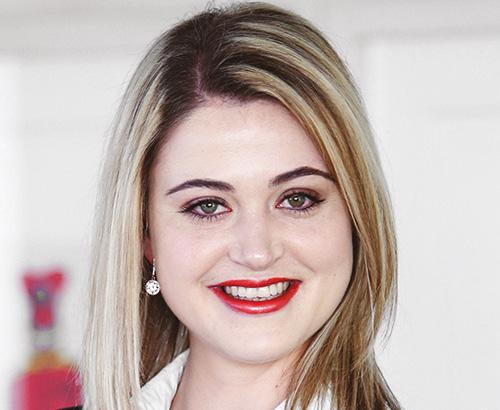
recent years, with the main impact being that income or capital gains distributed in a subsequent tax year will no longer be regarded as non-taxable capital distributions made to the South African beneficiaries. Beneficiaries of the offshore trust will have to ensure that the correct disclosures are made when completing their tax returns and that the relevant taxes are paid.
Another consideration often overlooked is that distributions received from an offshore trust will form part of an estate for estate duty purposes. In many instances, this is counterintuitive to the objective of making use of an offshore trust that would shield a beneficiary against estate duty. Retaining wealth in an offshore trust also provides greater asset protection against creditors and potential divorce claims. Therefore, depending on the quantum of the distributions and the reason for the beneficiaries wanting to repatriate or use funds, it’s recommended that advice obtained is tailormade to the beneficiaries’ needs and financial objectives.
The costs relating to the set-up and maintenance of offshore structures is often high, therefore a cost versus benefit analysis also needs to be done to ensure the expense of establishing an offshore structure doesn’t exceed the benefits. Offshore structures should also link seamlessly with succession planning, expansion plans and tax strategy. Failing to plan and not obtaining inputs from trusted advisers can cost you dearly.
30 June 2024 22 www.moneymarketing.co.za
OFFSHORE INVESTING

Take advantage of decades-high US and UK interest rates. Smart International Income Portfolio • High Income • Less Risk • Tax Efficient • Low Cost Contact our Client Relationship Team on 0800 336 555 or visit www.marriott.co.za More Predictable Investment Outcomes
Accessing buoyant overseas markets in rands with capital protection
Liberty is offering clients an opportunity to get involved in a structured offshore investment offering that seeks to take advantage of buoyant global markets.
The Structured Global Performer V4 and ESG V4 portfolios open for contributions from 13 May 2024 until 12 July 2024. Think of these as a gateway to offshore markets that provide access to different geographies, companies and sectors. Wrapped within an endowment wrapper, specifically the Evolve Investment Plan (including the sinking fund) and denominated in rands, the Global Performer also provides investors with a shield against the uncertainties of currency fluctuations.
Two portfolios are on offer, with the first focusing on the buoyant economies of Europe and the US, while the second focuses on global companies with an Environmental, Social and Governance (ESG) outlook, specifically for the investor

Wwho is looking for a more conscience-led approach to allocating their money.
As with previous tranches, Liberty is maintaining the underlying basket of 50% S&P 500 and 50% Euro Stoxx 50 for the Liberty Structured Global Performer V4 portfolio. While for the Liberty Structured Global Performer ESG V4 portfolio, we are using the MSCI Global Diversified ESG 100 Decrement 5% index. Both these portfolios will offer 30% downside protection, meaning that the investors capital (in other words, the total investment amount that was transferred into the structured portfolio) is protected if the return of the above-mentioned indices falls by less than 30% at the maturity date.
In terms of structuring, if the change in the value of the basket is positive at maturity date (after adjusting for tax), investors will receive a minimum return of 9.25%* p.a. (companies: 8.38%* p.a.) for the Liberty Structured Global Performer V4, and 13.05%* p.a. (companies: 11.89%* p.a.) for the ESG V4 portfolio with returns quoted net of fees and taxes. Where the change in the basket exceeds the minimum returns, investors receive all the growth (adjusted for tax) – this applies for the Structured Global Performer V4 and the ESG V4 portfolios.
For both of the Structured Portfolios, if the change in the value of the basket decreases by more than 30% at the
“Think of these as a gateway to offshore markets that provide access to different geographies, companies and sectors”
maturity date, investors are exposed to the performance of the basket and will receive the remaining investment value at maturity date.
We feel these two options will offer a clear choice for those looking for a level of certainty, as they offer a degree of capital protection using proven indexes that package together some of the topperforming global companies , balanced by the attractive upside potential.
Allocation enhancements are also available for new investments, as well as switches for investors who already have an Evolve Investment Plan (including Sinking Fund).
This latest tranche is not limited to individual investors but extends its reach to companies and trusts.
Complexity in energy transition attracts investment opportunity
BY ALEC CUTLER Portfolio manager of the Orbis Global Balanced Fund
hile electric vehicles, batteries, solar panels and windmills dominate headlines around the energy transition, boring bits of the system may do just as much to propel the transition forward – and the companies that provide them may be much more attractive investments.
Looking at the Orbis SICAV Global Balanced Fund, 17% is invested in the stocks and bonds of companies that play some role in the energy transition. To sketch out how the parts of the value chain fit together, let’s start with a typical offshore wind project: the Galloper wind farm off the eastern coast of England.
The core of the project is 56 windmills built and maintained by Siemens Gamesa, a unit of Siemens Energy. Helix, which operates a fleet of undersea robots and support ships, conducted the undersea trenching and burial work for the 56 cables connecting those turbines to an offshore substation, and Prysmian, a power and telecommunication cable manufacturer, provided some of the high-voltage cables to connect the project to adjacent windfarms and then 45km back to shore.
As the world adopts broadly dispersed power farms located far away from cities, our energy system will become much more cable intensive. Cables can represent a quarter of the cost for an offshore wind project, and to support wind farms and international interconnectors, the world will need to roll out about 5 000km of subsea cables every year (outside of China, which uses its
own suppliers). That is good news for Prysmian, which is the largest of only three major Western firms with the specialised factories to make those cables and the specialised ships to lay them. All that underwater work also augurs well for Helix.
Wind farms are not the only source of growing cable demand. Existing grids need cables too, in part because the world’s electric grids are ageing. The US Department of Energy reckons grid infrastructure will need to be expanded by 60% by 2030. Globally, that translates into US$650bn of estimated grid investment every year. A system juggling intermittent power sources, batteries, home solar panels, power-hungry artificial intelligence data centres, and electrified cars and factories will be more burdened than the grid is today. More electricity needs to travel, and Siemens Energy and Mitsubishi Heavy Industries (MHI) – both make electricity transmission and distribution equipment – are well placed to provide the increasingly sophisticated gear the new grid will require.
generator, provides reliable baseload electricity, as it can run its biomass plant 24/7. Drax also plays a role in energy storage. The move to a cleaner energy system is bigger than just the electric grid; it also involves industry and buildings. Siemens Energy offers a suite of products to help companies electrify their operations, while MHI focuses on helping companies switch their heat source from coal to gas, cutting carbon emissions by about 40% in the process.
“As the world adopts broadly dispersed power farms located far away from cities, our energy system will become much more cable intensive”
As systems become more reliant on wind and solar power, they need to keep the lights on when the wind isn’t blowing and the sun isn’t shining. Drax, a UK power
These companies are applying their skills in innovative ways to move both their own businesses and the broader transition forward. We have built positions in these companies at attractive prices. Drax trades for less than five times earnings. Helix and Signify trade for less than 10 times free cashflow. Siemens Energy is struggling to work through quality control issues at its wind turbine unit, but in our view the long-term value of its businesses is substantially higher than its current market capitalisation. MHI has begun to attract attention, but still trades at a lower valuation than the typical global stock – as does Prysmian. The energy transition features no shortage of complexity and controversy. Put those together, and it also features plenty of investment opportunity.
30 June 2024 OFFSHORE INVESTING 24 www.moneymarketing.co.za
* This is the return Liberty aims to achieve but it will be subject to market conditions at Strike Date. Liberty will inform investors of the final return % one week after Strike Date. Liberty is a Licensed Life Insurer of the Evolve Investment Plan and Evolve Investment Plan (Sinking Fund). Terms and Conditions, Risks and Limitations apply.
















Although
Don’t
KINGJAMESJHB 5586 Orbis Investment Management Limited is the appointed investment manager (“the Investment Manager”) of the Orbis Global Equity Fund and the Orbis SICAV Global Balanced Fund (“the Funds”). The Investment Manager has appointed Allan Gray Unit Trust Management (RF) (Pty) Ltd to act as a representative of the Funds in South Africa, in accordance with the provisions of section 65 of the Collective Investment Schemes Control Act 45 of 2002 (“the Representative”). The Funds trade weekly on a Thursday and unit prices as well as a schedule of fees, charges and maximum commissions can be obtained free of charge by contacting the Representative or from www.allangray.co.za. Collective investment schemes in securities (unit trusts or funds) are generally medium- to long-term investments. The value of units may go down as well as up and past performance is not necessarily a guide to future performance. The Investment Manager does not provide any guarantee regarding the capital or the performance of the Funds. The Funds may be closed to new investments at any time in order to be managed according to their mandates. Unit trusts are traded at ruling prices and can engage in borrowing and scrip lending. The Funds invest in foreign securities. Depending on their markets, trading in those securities may carry risks relating to, among others, macroeconomic and political circumstances, constraints on liquidity or the repatriation of funds, foreign exchange rate fluctuations, taxation and trade settlement.
we’ll
lookout for investment opportunities
they may arise, how we approach them
never change.
unique investment approach
structure
always set us apart
industry,
unmatched dedication
consistency
Orbis
always be on the
wherever
will
Our
and
have
in the
and it’s this
to
that is the
di erence.
just invest o shore. Invest di erently o shore with Allan Gray and Orbis.
WHERE WE INVEST CHANGES, HOW WE INVEST NEVER WILL.
To find out more about our Orbis Global Equity Fund and Orbis SICAV Global Balanced Fund, visit www.allangray.co.za or call Allan Gray on 0860 000 654, or speak to your financial adviser.
PSG Financial Services
REimagines South Africa and celebrates its top advisers
PSG Financial Services’ Annual Conference in May this year was themed ‘Reimagine South Africa’. The event included an array of top financial services industry leaders, journalists and other distinguished speakers who discussed the challenges facing the country and potential solutions that could better the lives of South Africans.
Established 26 years ago, PSG Financial Services has evolved into one of the country’s leading financial services providers. CEO Francois Gouws kicked off the event by providing an overview of the group’s performance and strategic focus areas. He noted that the business has had more than a decade of sequential headline earnings per share growth during challenging conditions. “Achieving a 20% return on equity over this period is remarkable, especially given that this return was achieved without excessive risk taking, as is reflected by our credit rating,” said Gouws. He explained that the group wants to grow both organically and through acquisitions, streamline its advice processes to further delight its clients, optimise its platforms, grow its footprint and continue its transformation journey.
Advisers are integral to PSG’s strategy and the success the firm has achieved.
Dan Hugo, outgoing CE of Distribution, discussed key plans to ensure the success of PSG’s adviser offices into the future. He explained how PSG aims to harness its technological investment so advisers can spend more time on value-enhancing activities, facilitating growth and enhancing the client experience. Managing risk and having consistent and effective compliance processes in place is vital in this highly

regulated environment, while it also helps to ensure the longevity of a practice and, ultimately, to protect the PSG brand.
Given the centrality of its adviser force to PSG’s ongoing success, it was fitting that the conference’s gala dinner celebrated the achievements of the firm’s top advisers from across the country.
And the winners are...
Wealth Manager of the Year:
Heinrich Richter from PSG Wealth Melrose Arch secured this year’s title, making this his fifth win.
Wealth Adviser of the Year:
Nelis Brink, from PSG Wealth and Employee Benefits R21 , earned the achievement for a fourth time.
Insure Adviser of the Year:
Ryno Pretorius from PSG Insure Bloemfontein Pretty Gardens was a first-time winner in this category.

Office
of
the Year:
PSG Wealth and Employee Benefits R21 garnered this year’s award for the second time.
Employee Benefits Office of the year:
PSG Wealth R21 Employee Benefits took the honours in this category. It is the 12th time that the office secured this coveted award. Nerine and Neels Brink accepted the award on behalf of the office.
Lifetime Achievement Award
Earlier this year, Dan Hugo decided to step down as CE of Distribution. In recognition of his immense contribution to the firm for over two decades, Dan Hugo was awarded PSG’s first Lifetime Achievement Award. He will continue to support the firm in his capacity as Chairman of Acquisitions going forward , and Edward Gibbens has taken over in the role as CE of Distribution.
Francois Gouws and Nelis Brink
External contributors:
SA thought leaders share insights on local challenges and reimagining solutions
The continued success of PSG, and corporate SA, requires a fertile economic ground for growth. The conference therefore brought together a range of experts to unpack SA’s problems and reimagine solutions, aiming to further equip PSG advisers with the knowledge and insights they need to provide guidance and considered advice to their clients.
André De Ruyter, former CEO of Eskom and current senior fellow at the Yale Jackson School of Global Affairs in the US, discussed South Africa’s electricity crisis and its impact on the economy. The utility, he said, should shift its focus to the expansion of transmission infrastructure instead of procuring renewables, as these add to government’s contingent liabilities. He said the private sector is in a much better financial position to invest and take on the financial risk of developing the magnitude of renewable energy capacity SA must add to the grid. In terms of Eskom’s role in the future, De Ruyter highlighted that “We should avoid spending billions on retrofitting old, tired plants to become environmentally compliant. That money should go into extending the transmission grid to allow more private sector generation capacity to be added.”

PSG ANNUAL CONFERENCE 2024 26 www.moneymarketing.co.za
Francois Gouws and Heinrich Richter
Dan Hugo on stage at the awards ceremony


Advocate Glynnis Breytenbach, former prosecutor for the National Prosecuting Authority (NPA) of South Africa and a Member of SA Parliament, outlined several challenges the country faces from a justice system perspective –including crime and corruption – and the impact reforms could have on economic growth. She emphasised the need for a new independent crime-busting institution to combat lawlessness, while highlighting the importance of a strong and independent National Prosecuting Authority (NPA) to prosecute crimes. Possible election outcomes loomed large in the minds of South Africans in the
run-up to the national election and a panel discussion between political journalists and analysts Qaanitah Hunter, Justice Malala and Stephen Grootes generated interesting debates and insights.
During 2023, business leaders and government agreed to work together with the aim of addressing some of South Africa’s most pressing issues, namely the energy crisis, transport and logistics, and crime and corruption. The second panel of the conference, led by financial journalist Alishia Seckam, debated whether we are starting to see progress and wins because of closer cooperation between the private and public sector.
“PSG aims to harness its technological investment so advisers can spend more time on value-enhancing activities, facilitating growth and enhancing the client experience”

Panel members included James Mackay, CEO Energy Council of South Africa, Andile Sangqu, Chairperson of the Transnet Board, and Jannie Durand, CEO/ Executive Director at Remgro.
They discussed South Africa’s economic and social challenges, emphasised the need to address structural deficits in education and healthcare, and highlighted the importance of regulatory reforms when it comes to unlocking private sector investment. The panel also debated the importance of addressing energy sector challenges, as well as combatting crime and corruption, to unlock economic growth.
In addition to these insights, the lineup also included fascinating insights by author and speaker GG Alcock. He shared insights into the staggering opportunity that the informal sector holds – prompting advisers to re-evaluate their perceptions on the SA economy. Examples included the fact that South Africa’s informal
sector food and haircare industries alone generate R200bn and R10bn of revenue annually. Lastly, futurist John Sanei provided insights into the mindset changes that are needed to truly rethink how we approach some of the grand challenges we face as a society in the digital age.
Various product providers also shared their thoughts with delegates, leaving advisers both inspired and equipped with useful and relevant new insights into the challenges South Africa faces.

Images: Supplied 30 June 2024 www.moneymarketing.co.za 27
Affiliates of the PSG Financial Services Group, a licensed controlling company, are authorised financial services providers. www.psg.co.za
From left to right - Wayne Stevens, Lizaan Robijn, Chantel Swart, Nerine Brink, Francois Gouws, Neels Brink, Elke Brink, Dan Hugo, Jan Botha, Gerrie Cilliers and Nelis Brink
Nerine Brink, Francois Gouws and Neels Brink
Francois Gouws and Ryno Pretorius






Free yourself to make your greatest impact.






















A sustainable and profitable financial practice is all about taking care of your clients' goals and making the most of your time.
With Investment Solutions by Alexforbes as your DFM partner, you not only have a powerful investment proposition for your clients, but we’ll also take care of research, analysis, reporting, and compliance, giving you more time to guide them, coach them on good financial behaviour, and source new business.

Let’s partner for impact.


All that and unparalleled access to a wide range of local and global investment opportunities, competitive pricing and tailored solutions will help you make your greatest impact yet, on your clients and in your practice.




investmentsolutions.alexforbes.com Alexander Forbes Investments Limited is an authorised financial services provider (FSP 711 and registration number 1997/000595/06), a registered insurer (10/10/155) and an approved retirement fund administrator (24/217).
The two-pot system: An opportunity for advisers to support members’ goals
BY ELRINA WESSELS Principal Strategic Clients at Alexforbes
The two-pot retirement system represents a significant change in retirement planning, providing financial advisers and their clients with a valuable opportunity for transformation. It is expected that replacement ratios will improve from the current dismal average of 25%-35% to around 50% or more.
In an ideal world, the prudent advice to members would be to preserve their savings pot to ensure a comfortable retirement. However, the reality is that lowto middle-income households struggle financially, facing a constant juggling act with monthly expenses.
It is estimated that a middle-income earner with a bond of R1,5m, a car loan of R300 000 and a personal loan of R50 000 is now paying around R5 400 more per month on loan repayments compared to November 2021. This financial strain is compounded by unexpected expenses such as medical bills not covered by medical aid, or car breakdowns, leading to a downward spiral into debt.
Research conducted by Alexforbes, which included approximately 900 000 members, revealed a total debt-toincome ratio (secured and unsecured) of 77%, highlighting the challenges households face.
Continuing dire situations like these result in high stress levels, deteriorating health, depression, reduced productivity and absenteeism, directly impacting both the employer and our economy. It is estimated that the South African economy loses up to R33bn annually due to absenteeism.
Given these realities, expecting members not to access their savings pot is unrealistic. Instead, retirement funds and advisers should assist members in balancing the pros and cons based on their circumstances, aligning short- and long-term goals. This was the overarching purpose of the newly created system.
Linking savings pot to specific goals
The question arises: how do we encourage members to view the savings pot as a means to an end, rather than easily accessible money? With the new retirement dispensation, financial advice will be vital to improve members’ shortand long-term financial outcomes by linking savings pots to specific goals or ‘thinking outside the savings pot’.
Based on Alexforbes’ calculations, we believe that the savings pot could, in some circumstances, be used to help members achieve short-, mediumand long-term financial goals, such as
paying off or reducing unsecured debt, saving for their child’s education, and accumulating adequate savings for a lump sum at retirement.
For example, let’s consider a 25-year-old member with an annual income of R350 000 and an unsecured debt ratio of 35% of annual income, with a debt interest rate of 18%. The member’s goals are to settle their unsecured debt as soon as possible and then save for their child’s tertiary education. To achieve this, they increased their contributions from 15% to 16% of salary.
• As shown, at retirement the member still has sufficient savings in their pot to access as a lump sum if desired. Their total retirement benefit (retirement and savings pot) is estimated to achieve a replacement ratio of 70%, compared to 54% if they had accessed their savings pot annually.
• The impact of debt repayment: The additional disposable income available to the member in less than three years is R3 052, providing welcome relief and acting as a buffer against further unsecured debt. Depending on the situation, this solution can also be combined with debt counselling, which Alexforbes offers.
• As a financially constrained member, an education policy with a monthly premium of R1 200 is simply not affordable, whereas a 1% increase in monthly contributions to the fund (R292) would enable the member to afford tertiary education for the child. Although Alexforbes considers a tax-free savings
account a better option, it is important not to lose sight of the fact that many members do not have disposable income to provide for additional savings to the extent required.
• Pension fund contributions of up to 27.5% of remuneration (maximum R350 000) are tax deductible. The member contributes an additional 1% to the fund (R292), but their takehome pay only reduces by R216 due to the favourable tax dispensation.
• Tax on amounts withdrawn from the savings pot: While members will be taxed at marginal rates on any withdrawals, calculations show that the impact does not differ substantially compared to after-tax money allocated to a tax-free savings account.
As illustrated above, by attaching specific goals to their savings pot, the member improved their short-term financial outcomes, planned for mediumterm expenses, and continued to protect their replacement ratio. Compared to the expected replacement ratio of around 57% for a similar member who accessed their savings annually, goals-based savings requires consideration.
The pivotal role of an adviser
The scenarios presented are merely illustrations of how the savings pot can be used to improve a member’s shortterm outcome. The challenges and goals for each member must be assessed

individually, including the relevant tax and long-term implications, emphasising the crucial role of financial advisers or retirement counsellors.
With short-term needs being better managed, the focus on long-term retirement planning will become more acceptable to members. While the above scenarios are feasible for younger members and those joining from 1 September 2024 onwards, members closer to retirement who did not preserve their benefits in the past requires a different discussion.
It’s also important not to lose sight of the importance of making adequate contributions to not only achieve the required replacement ratio but also protect it when accessing the savings pot. Calculations show that with contribution levels below 12%, prudent advice would be to preserve or access only in genuine financial emergencies.
Regardless of the different scenarios, it is evident that the two-pot retirement system creates an opportunity to improve the lives of low to middle-income earners, with the financial advisory industry playing a fundamental role. In fact, the success of the two-pot retirement system depends on members receiving proper financial counselling and advice, not only at resignation or retirement but also on an ongoing basis. By walking the journey with members, providing guidance on improving their current financial situation, and building trust, advisers can offer longterm and other financial solutions as well.

RETIREMENT 30 June 2024 www.moneymarketing.co.za 29
Another way to get a foot on the property ladder
BY SIOBHAN CASSIDY MoneyMarketing Contributor
South Africans who find the traditional rite of passage of buying property as a home unaffordable are exploring alternative ways of getting a foot on the property ladder – from buying shares in real estate investment trusts (REITs) to fractional ownership in properties.
In South Africa, property is often a key early investment but as demand and prices continue to soar, many are unable to afford a property that they would like to live in. Fortunately, there are other ways to access real estate investments, especially for the tech- and investment-savvy. Listed property provides the simplest and most transparent exposure to real estate, but a relatively new option is fractional ownership, with EasyProperties having attracted more than 110 000 active investors out of a base of 350 000 registered users after four years in business. Also, EasyProperties has paid R20.4m in dividends in those four years.
Like the Listed Property sector, EasyProperties offers exposure to property without the headaches of direct ownership, such as a lack of liquidity and managing tenants. Also, with EasyProperties, which is 100% owned by EasyEquities, there are very low barriers to entry.
Rupert Finnemore, EasyProperties Chief Executive Officer, explains there is no minimum investment, and many people make investments of less than R100. “Literally, your minimum investment is R1.” For that, investors get access to state-of-the-art properties. Finnemore says the platform has recently bought several units in Cape Town at R55 000 a square metre, which “99.9% of the country” wouldn’t normally have access to.
EasyProperties combines fractional ownership and crowdfunding “to solve a lot of the friction points people normally encounter when investing in property, such as a lack of access to capital and opportunity, as well as the risks associated with having a single asset”, says Finnemore. For example: “You have a tenant who doesn’t pay, and it takes a year to get rid of them and you have to fund this extra bond for a year.” The investment platform enables fractional ownership in properties via Special Purpose Vehicles, a service regulated under the Financial Advisory and Intermediary Services Act.
There are between 8 000 and 15 000 investors in each deal, and the business negotiates a bulk deal for units in a development that ordinary investors wouldn’t have access to. “In some instances, we are buying at 12% less than the market value,” says Finnemore.
In the past, one of the reasons property syndications caused South Africans to lose money was the complex structures that didn’t give investors direct ownership in the underlying properties. EasyProperties creates a shelf company or an SPV. Money is raised in an initial public offering process into this unlisted company, a process regulated in terms of the Companies Act.
The investment offered by each SPV constitutes a public property syndication scheme, which is governed by the Consumer Protection Act. A prospectus for each scheme discloses the important information. “If we are looking to raise R8m to pay for these units, we will issue 8 million shares at R1 each and EasyProperties investors can apply for the shares,” says Finnemore.


“Like the Listed Property sector, EasyProperties offers exposure to property without the headaches of direct ownership, such as a lack of liquidity and managing tenants”
After the SPV buys the property, it’s managed by the EasyProperties rental management team. Rental is collected and profit is returned to investors in the form of a dividend every quarter. “Some of our properties paid a 9% dividend this last quarter, but dividends vary based on market conditions,” says Finnemore. “We remind investors not to forget about capital growth, to stay in for the investment term to benefit from that.”
EasyProperties has each property valued by independent professional valuation companies every year. The reports are made available on the EasyProperties platform for investors to review. Each investment has a term of between five and seven years, but should an investor need to exit earlier, they can sell their shares in quarterly auctions.
Finnemore cautions that EasyProperties wasn’t set up for people to trade in property shares and they shouldn’t invest cash they might need in the short term. “We are not a REIT, where guys are buying and selling every day. We are trying to create solid, stable normal property investments.”
The quarterly auctions are just a marketplace, and the liquidity for any particular property depends on supply and demand. There is often a price to pay for the liquidity, Finnemore says. “Buyers in the auction aren’t necessarily coming to the auction to pay market value. They are looking for deals.” Still, he says, around 10% of the shares in each of the properties trade every auction.
“At the end of five years, we exit that entire investment. The full value of your investment is going to be delivered to you,” he adds. Finnemore points out that, like other investments, property ownership through fractional shares is not without risks. “There is no guarantee that you are going to do well.” He points to the interest rate increases over the period since EasyProperties launched as an example of risk.
“EasyProperties generally does a 70:30 equity raise so there is a 30% loan-to-value on all properties, which is fortunately quite conservative. But still the base rate then was, I think, 7.25%; now it is 11.75%. So there’s obviously interest rate risk.” There are also other “normal risks” of property investing, but your exposure is shared.
EasyProperties has yet to officially exit an investment. This will happen next year when it will be put to a vote among shareholders. EasyProperties holds 10 000 A+ shares in each of the SPVs, which means they can make management decisions. When it comes to exiting an investment, the process is governed by company law, so EasyProperties will make the case for exit and put it to a shareholder vote. 2025 will be EasyProperties’ fifth year in business – an interesting one to watch.
30 June 2024 PROPERTY INVESTING 30 www.moneymarketing.co.za
IMAGES Shutterstock .com
Greater longevity and rising health costs are driving take-up of gap cover
BY MICHAEL EMERY Marketing Executive at Ambledown Financial Services
Advances in medical science and technology, combined with better sanitation and hygiene, have dramatically increased life expectancy and quality of life. South Africa’s life expectancy is currently just over 65 years, somewhat below the global average of 71 years but still double what it was in 1900.
While these figures vary slightly depending on which data is used, the trend is clear: we are living longer. At the same time, though, it’s important to recognise that longevity must be accompanied by good health, or it becomes a burden.
Consequently, people are taking care to eat more healthily and exercise. In addition, wherever possible, they are enrolling in medical schemes to ensure they have access to the best quality medical care they can afford. Good medical schemes typically provide help with preventative care while also making it possible to access top specialists and effective medicines when required.
However, fewer people realise that tariff rates in the medical sector vary widely, which means that hospital and specialist costs can be significantly higher than the benefits paid out by any medical scheme, no matter what the level of cover is.
For example , most medical scheme options typically cover 100% of the scheme’s rate, with the higher end schemes rising to 200% or even 300%. This looks sufficient, but the trouble is that doctors and hospitals can and do charge much more – claims in excess of 300% can occur.
Some of these high rates are simply the result of market dynamics – the best can always charge a premium – but
medical inflation is also running at a higher rate than consumer price inflation. The consumer price index of medical products was measured at 112 points in November 2023, compared to 96.5 in January 2021 – an indication of how medical costs are rising all the time. Healthcare costs are said to be running at 3%-5% above consumer inflation, resulting in corresponding increases in medical scheme contributions. Medical inflation is the basic driver of increasing medical costs – Stats SA publishes the medical inflation rate, and this is the basic underpinning of the industry’s pricing structure, including both medical scheme and gap cover premiums.
This challenge is not unique to South Africa. In response, medical schemes have introduced a growing number of initiatives designed to reduce the rise they have to pass onto their members. These include co-payments, and restrictions on which doctors and hospitals may be used. Medical schemes may also restrict increases by reducing the amount of annual savings, making comparisons with gap cover difficult. By contrast, because it is an insurance product, gap cover premiums are
determined by underwriting rates, with premiums often fluctuating between individuals and groups.
These measures are helpful, but they are only partial solutions. The basic trend is that even those on high-tier medical plans face the prospect of significant shortfalls for certain procedures which need to be paid for out their own pockets; these expenses can be financially crippling. Given our current cost-of-living crisis, unbudgeted expenses can have a highly detrimental impact on finances that are already under pressure.
Gap cover was created to provide some relief and protection from these shortfalls to members of medical schemes. The word “cover” is important; gap cover is essentially short-term insurance cover, as opposed to a medical scheme, which is governed by the particular scheme’s rules and ultimately regulated by the Medical Schemes Act. Gap cover supplements but cannot replace a medical scheme, and is not a substitute for a medical scheme – in fact, gap cover is only available for members of a registered South African medical scheme.
As always in a vibrant marketplace like South Africa, there is a range of gap
“More and more South Africans are recognising that gap cover has become an integral part of their planning to ensure financial and physical wellbeing”

cover products that can be purchased. It is very important that individuals consult with a reputable broker to identify what gap cover is best suited to their needs and pocket.
Depending on your gap provider, gap cover can be purchased for the family plus its dependants for a single amount per month. However, dependants who are over the age of 21 have to get their own gap cover; although, if they are financially dependent on the principal member, coverage can be extended to the age of 25 if the rules of the particular company allow for it.
Mentally or physically handicapped children are covered irrespective of age if they are financially dependent on their parents. Always check with your broker to be sure what your plan covers.
Members of the extended family, even if dependent on the principal member, such as parents, must get their own gap cover; although, as always, the rules of the various gap cover companies vary. Again, it’s worth checking with your broker to be certain.


HEALTH 30 June 2024 www.moneymarketing.co.za 31 IMAGES Shutterstock .com © Copyright MoneyMarketing 2024 ADVERTISING EDITORIAL DISTRIBUTION & SUBSCRIPTION PUBLISHING TEAM Johannesburg Office: New Media, a division of Media24 (Pty) Ltd, Ground Floor, 272 Pretoria Avenue, Randburg, 2194 Postal Address: PO Box 784698, Sandton, Johannesburg, 2146 Cape Town Head Office: New Media, a division of Media24 (Pty) Ltd, 8th Floor, Media24 Centre, 40 Heerengracht, Cape Town, 8001 | Postal Address: PO Box 440, Green Point, Cape Town, 8051 Tel: +27 (0)21 406 2002 | newmedia@newmedia.co.za CONTACT FELICITY GARBERS Email: felicity.garbers@newmedia.co.za Tel: +27 (0)78 758 6227 GET A 12-MONTH SA SUBSCRIPTION FOR ONLY R494! (SA postage only, including VAT) SUBSCRIBE TO EDITOR: Sandy Welch sandy.welch@newmedia.co.za ART DIRECTOR: Julia van Schalkwyk SUB EDITOR: Anita van der Merwe DIGITAL CONTENT CO-ORDINATOR: Mpolokeng Lechoba KEY ACCOUNT MANAGER: Mildred Manthey Cell: +27 (0)72 832 5104 mildred.manthey@newmedia.co.za Felicity Garbers felicity.garbers@newmedia.co.za GENERAL MANAGER: Dev Naidoo HEAD OF COMMERCIAL: B2B: Johann Gerber Johann.gerber@newmedia.co.za PRODUCTION MANAGER: Angela Silver angela.silver@newmedia.co.za GROUP ART DIRECTOR: David Kyslinger DIGITAL MANAGER: Varushka Padayachi Unless previously agreed in writing, MoneyMarketing owns all rights to all contributions, whether image or text. SOURCES: Shutterstock, supplied images, editorial staff. While precautions have been taken to ensure the accuracy of its contents and information given to readers, neither the editor, publisher, or its agents can accept responsibility for damages or injury which may arise therefrom. All rights reserved. © MoneyMarketing. No part of this publication may be reproduced, stored in a retrieval system or transmitted in any form or by any means, photocopying, electronic, mechanical or otherwise without the prior written permission of the copyright owners. © MoneyMarketing is not a financial adviser. The magazine accepts no responsibility for any decision made by any reader on the basis of information of whatever kind published in the magazine. MoneyMarketing is printed and bound by CTP Printers - Cape Town MANAGEMENT TEAM CEO NEW MEDIA: Aileen Lamb COMMERCIAL DIRECTOR: Maria Tiganis STRATEGY DIRECTOR: Andrew Nunneley CHIEF FINANCIAL OFFICER: Venette Malone CEO MEDIA24: Ishmet Davidson Published by New Media, a division of Media24 (Pty) Ltd.
Financial Services is authorised Financial Services Provider No.10287
Ambledown
More time for your clients.
Equilibrium is a discretionary fund manager that brings balance into your advice practice. We enable you to do what really ma ers.
That is the power of balance.

eqinvest.co.za
Equilibrium Investment Management (Pty) Ltd (Equilibrium) (Reg. No. 2007/018275/07) is an authorised financial services provider (FSP 32726) and part of Momentum Metropolitan Holdings Limited, rated B-BBEE level 1.






















































































































